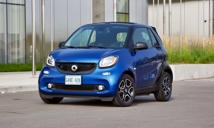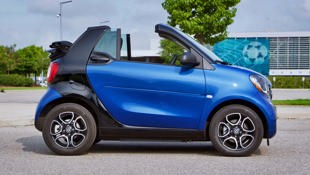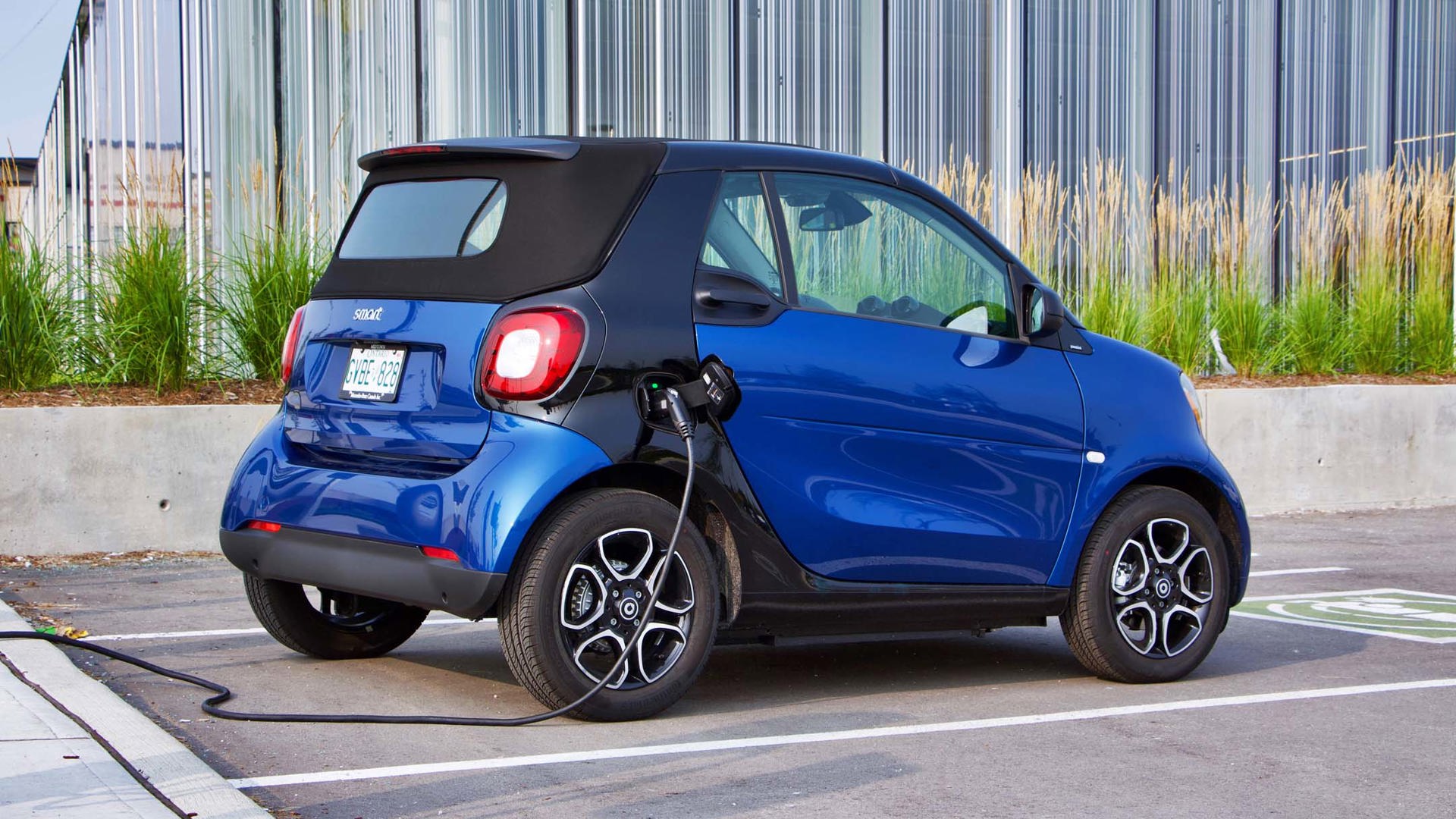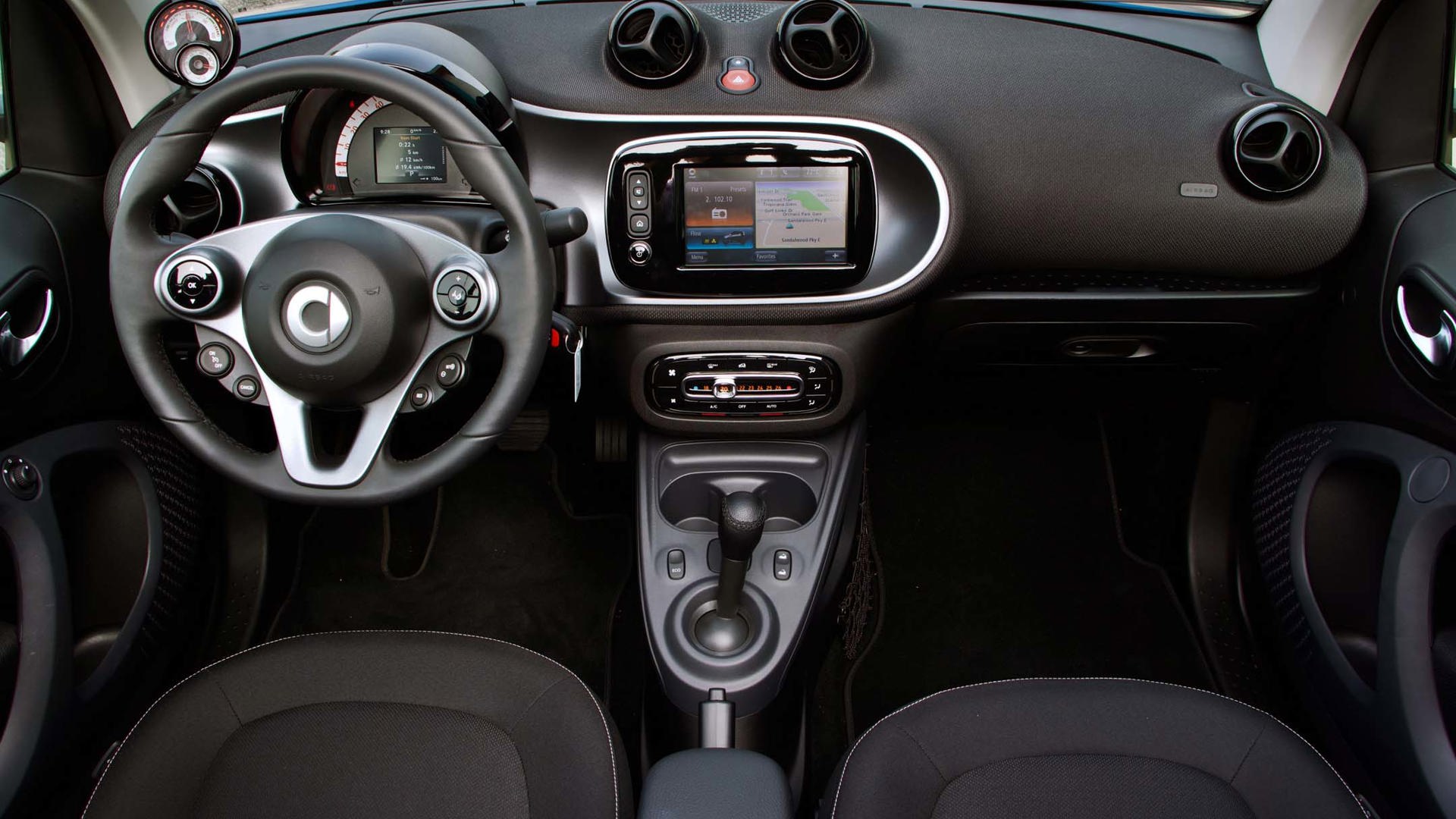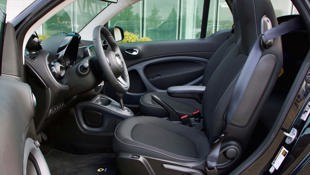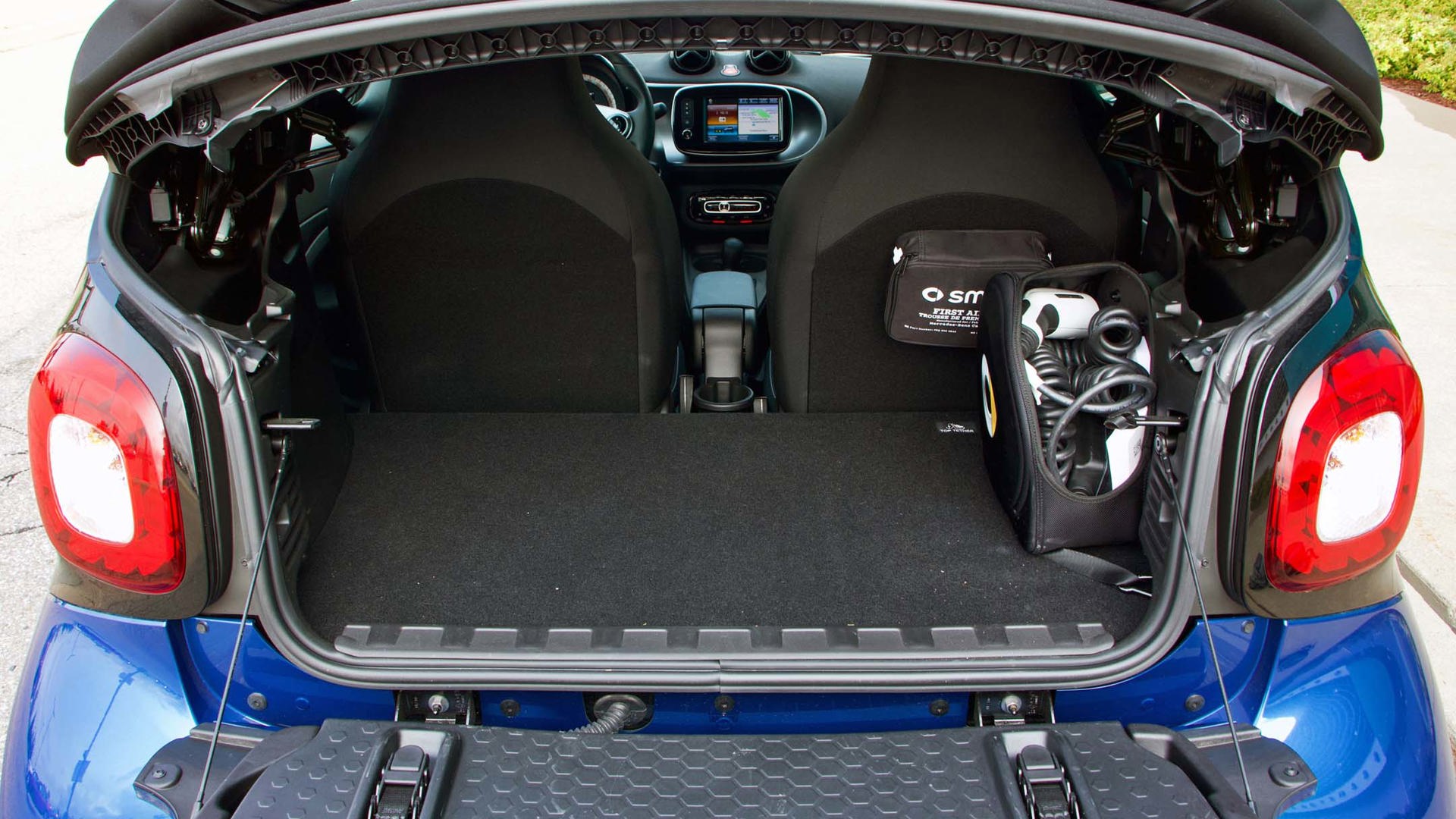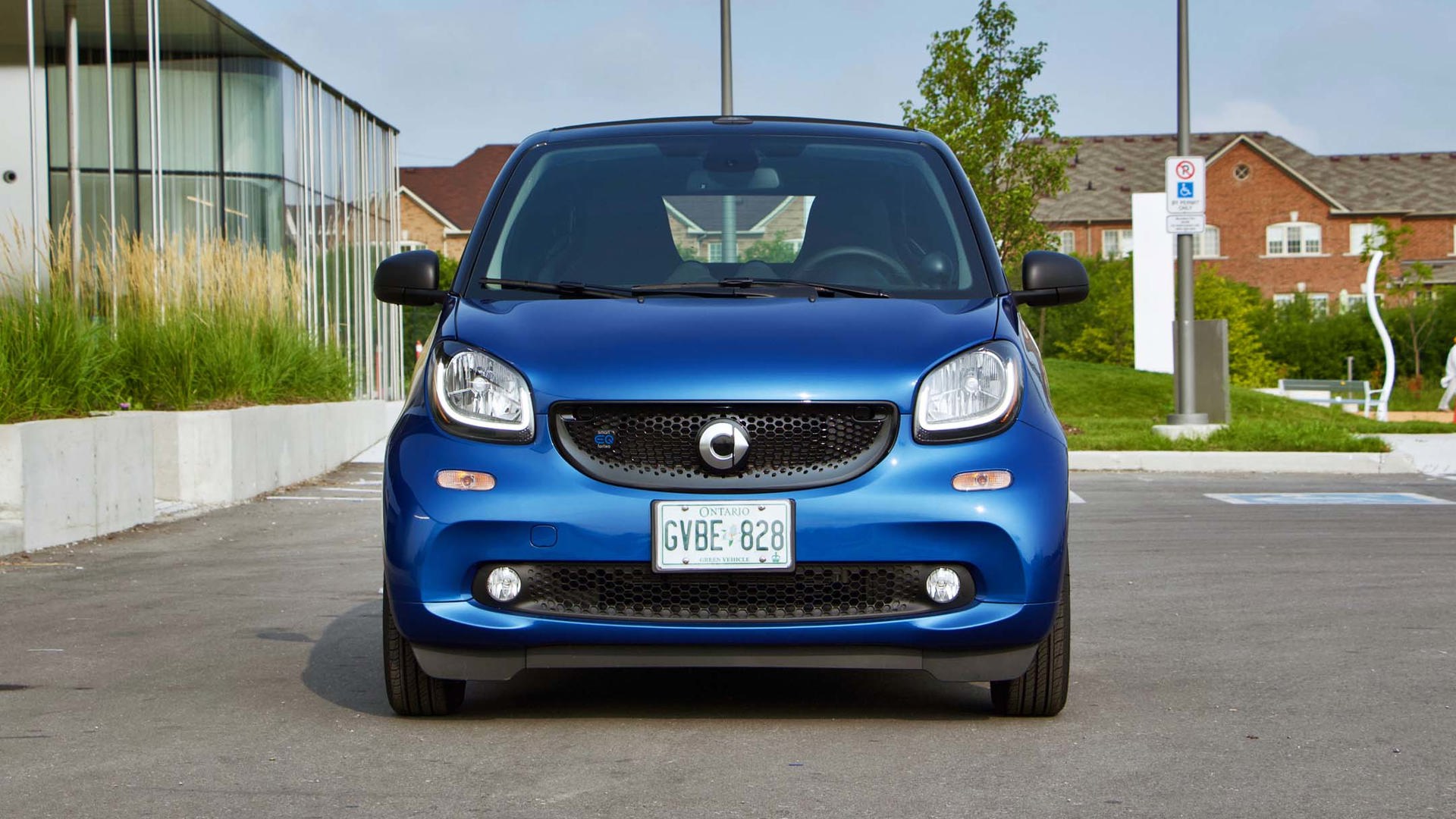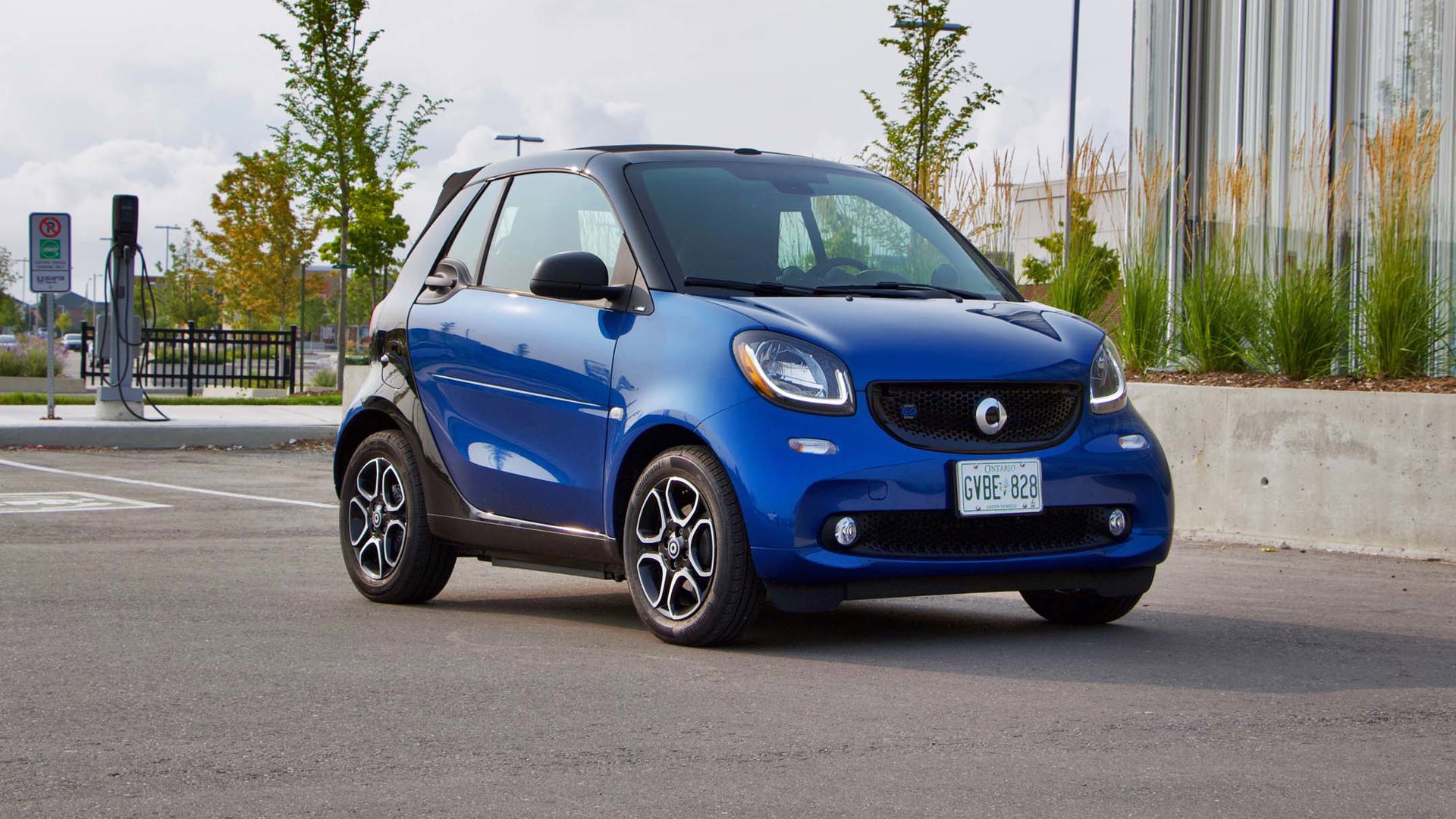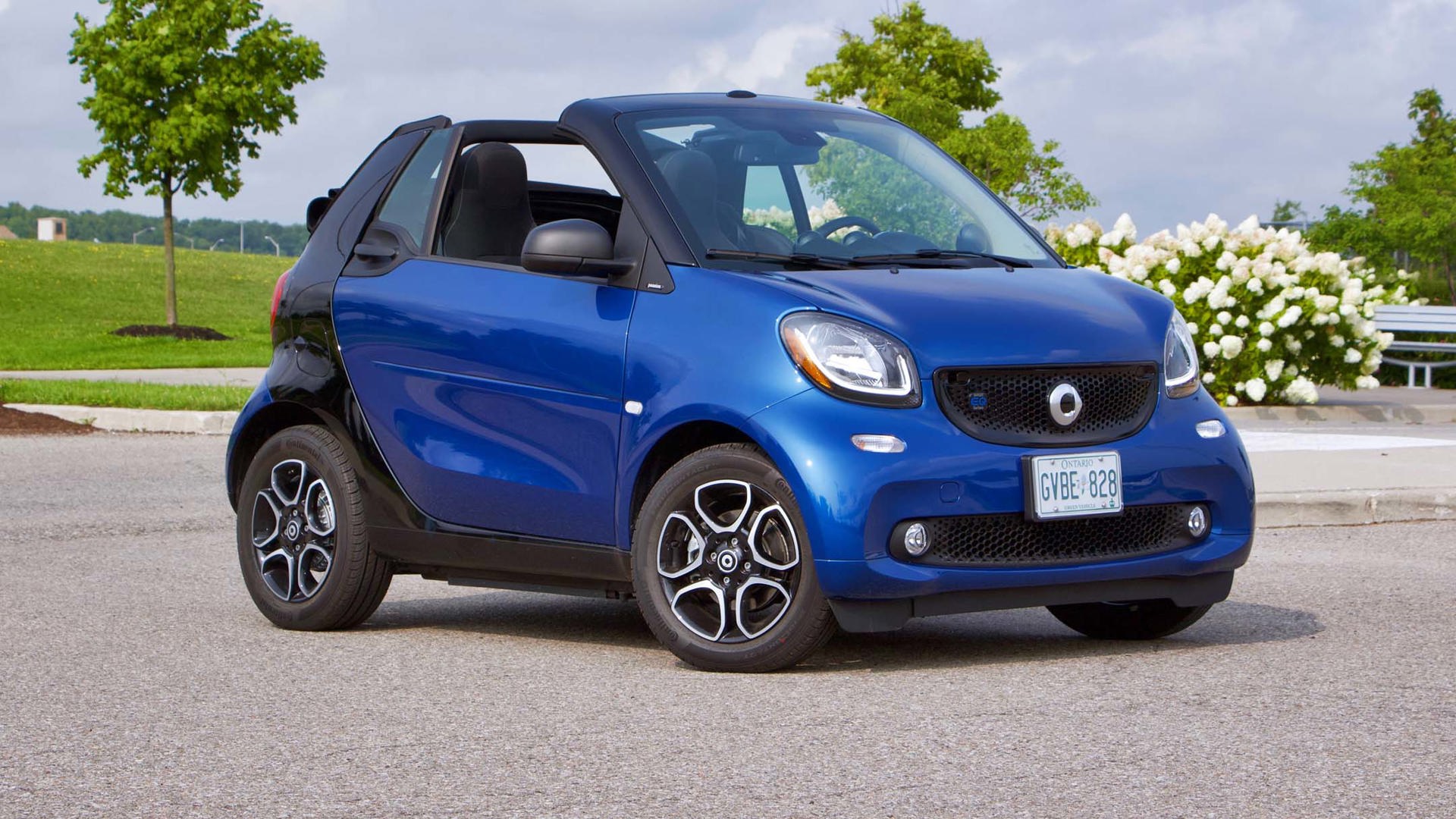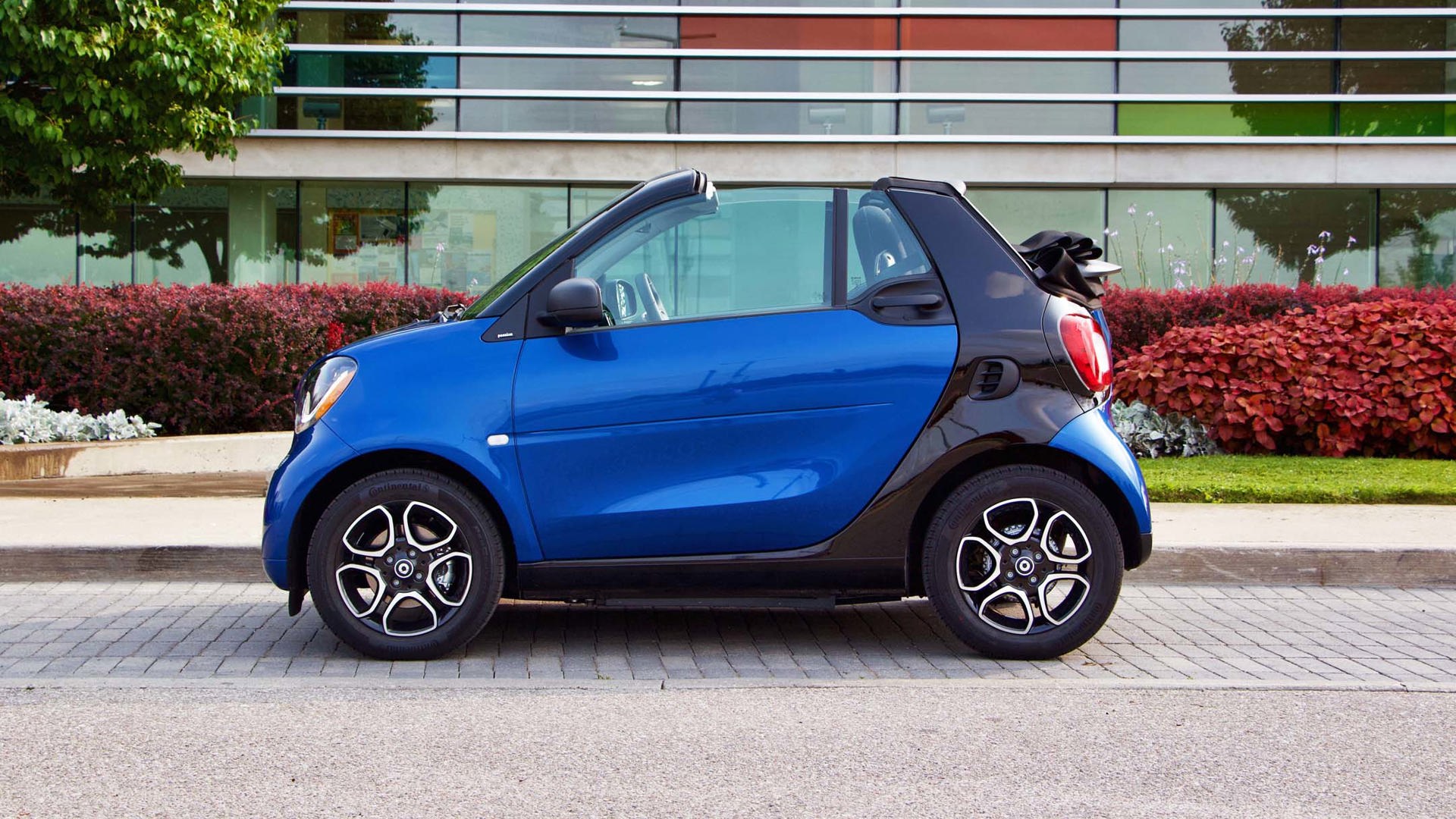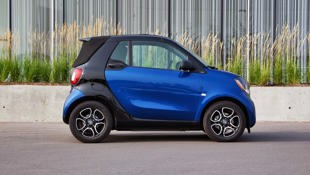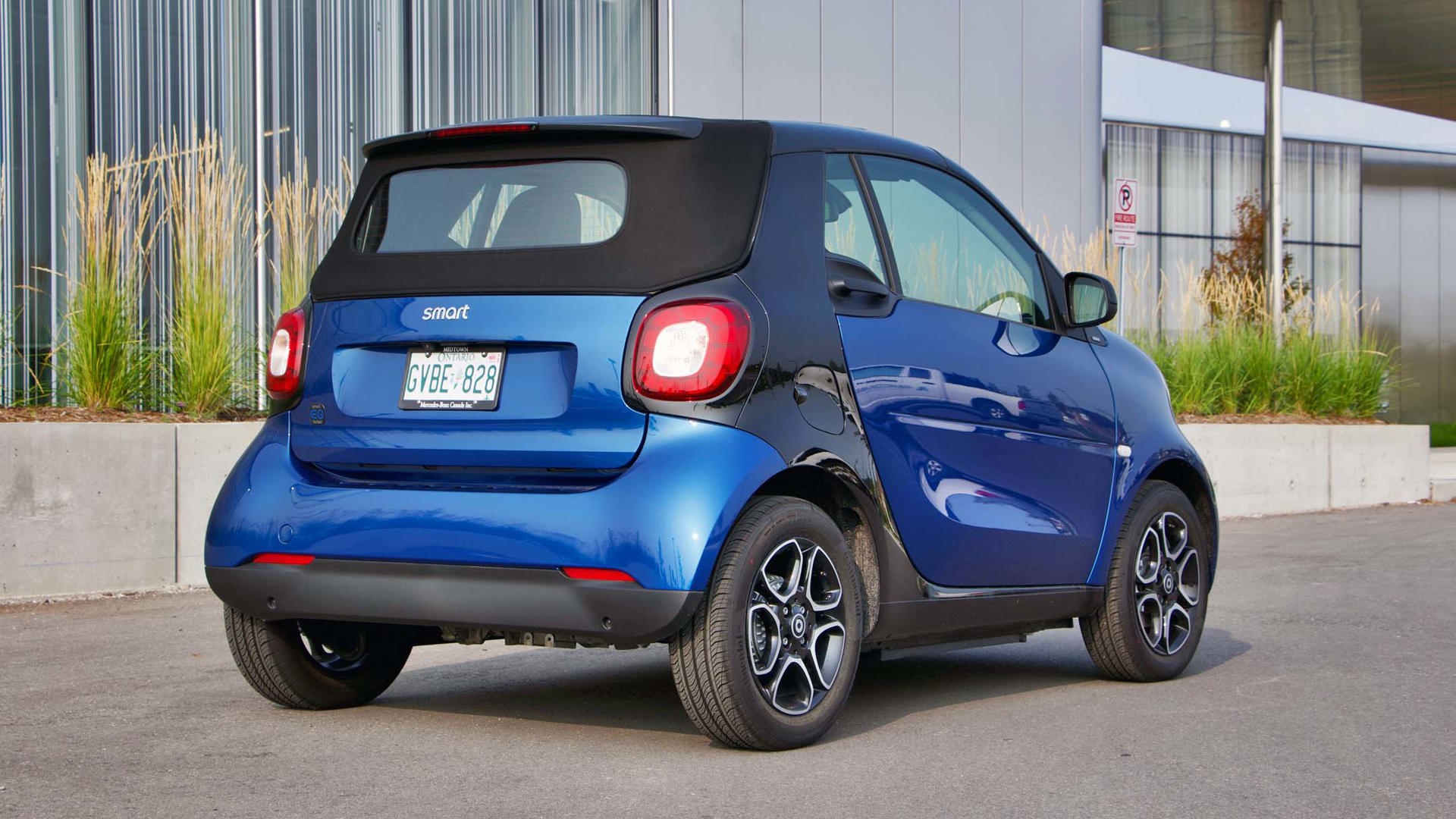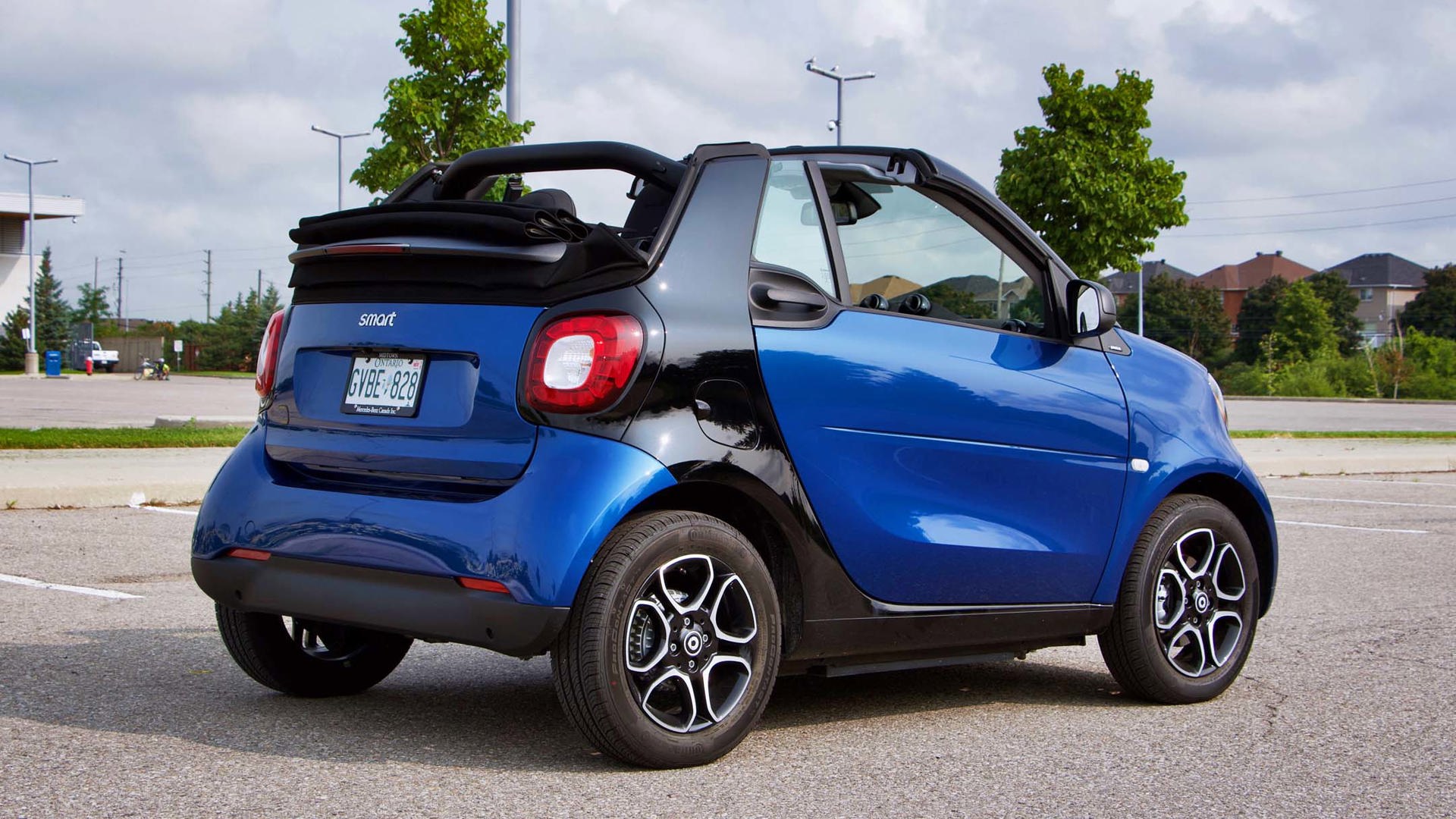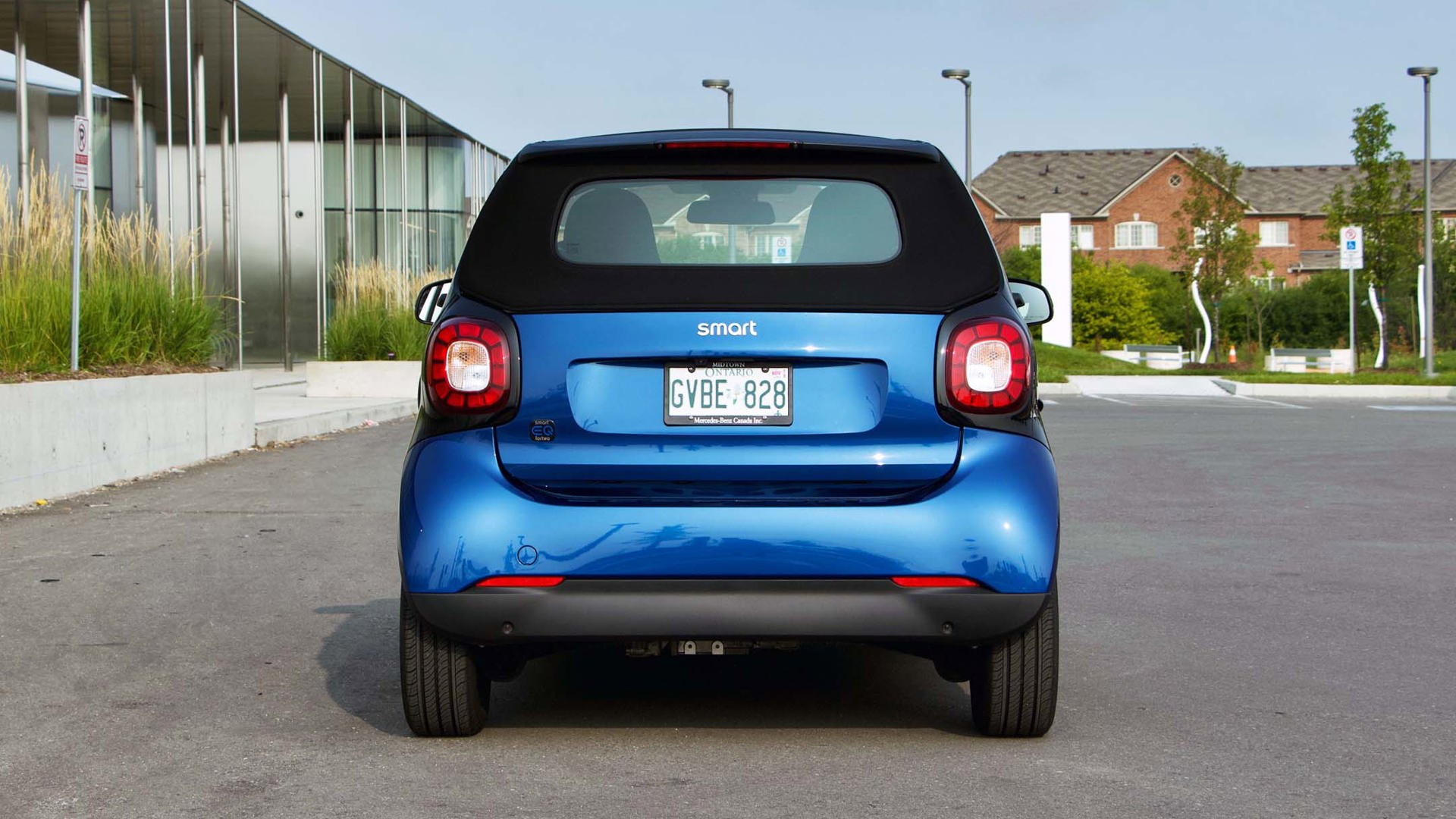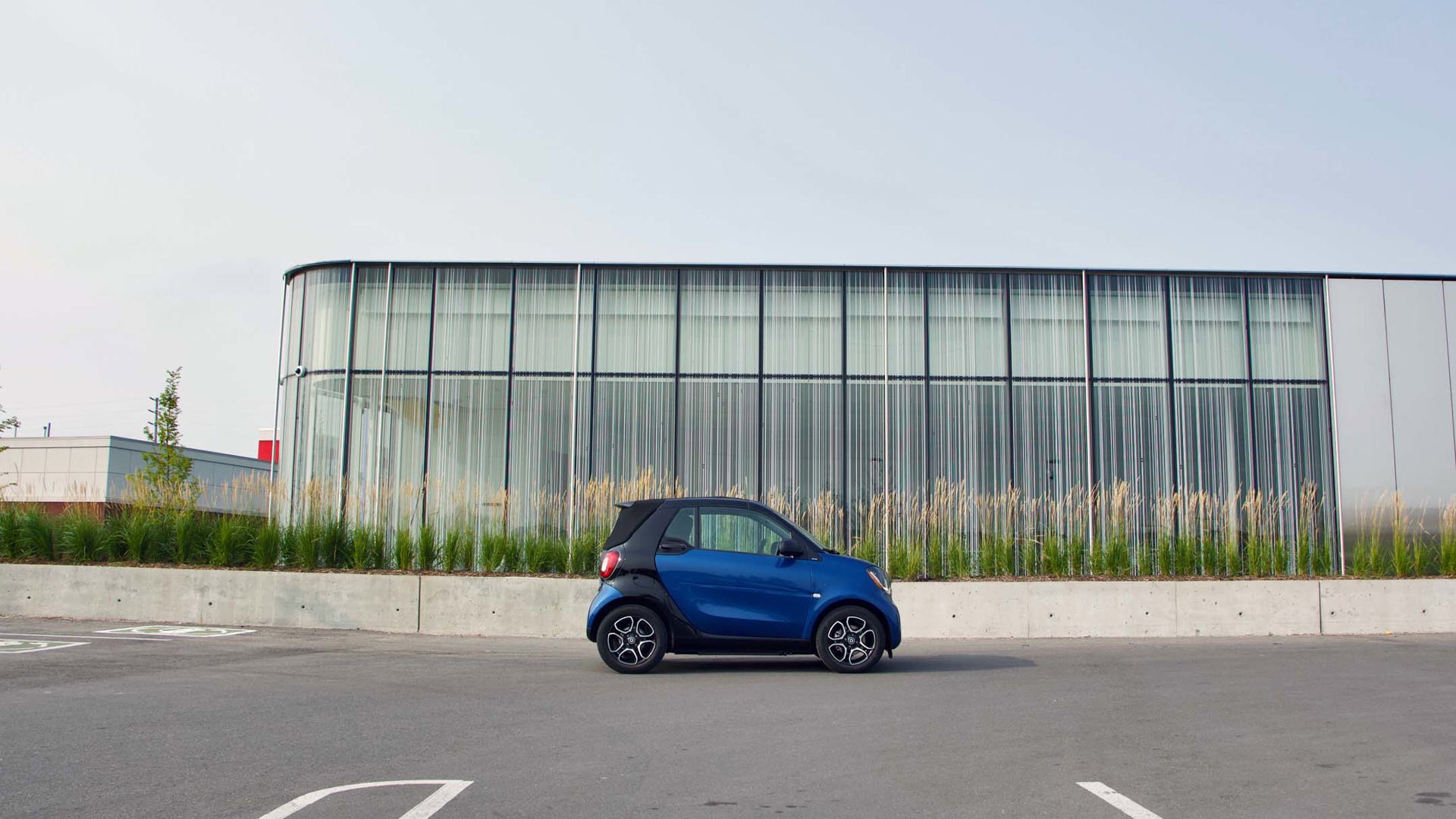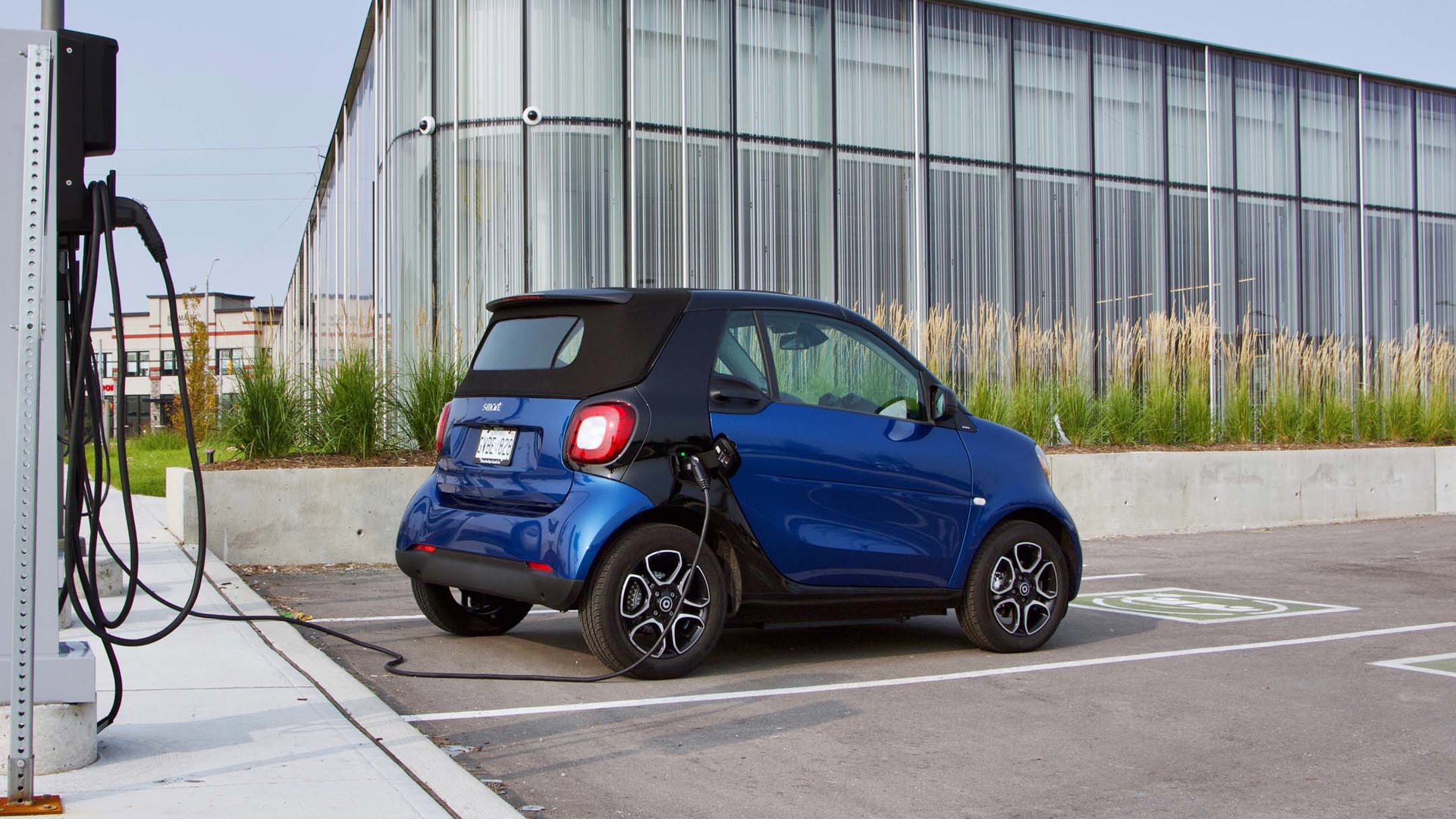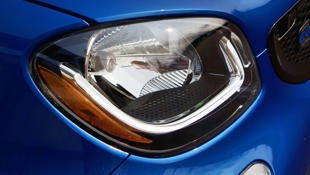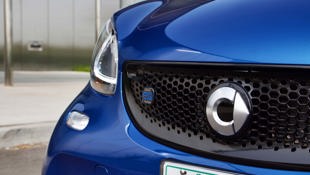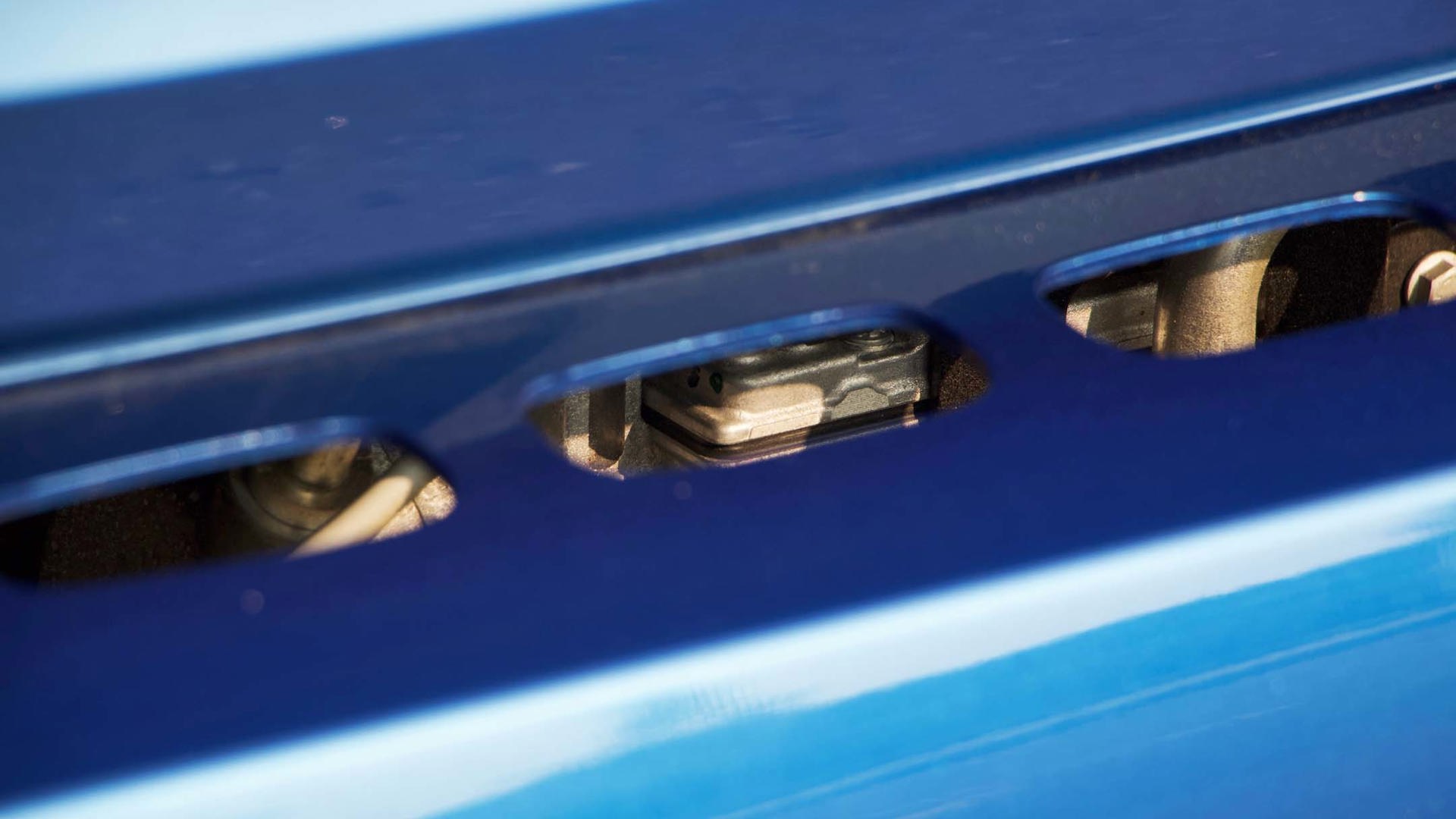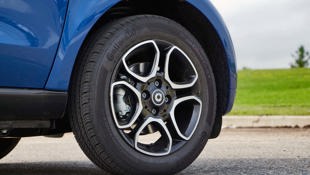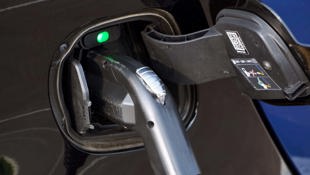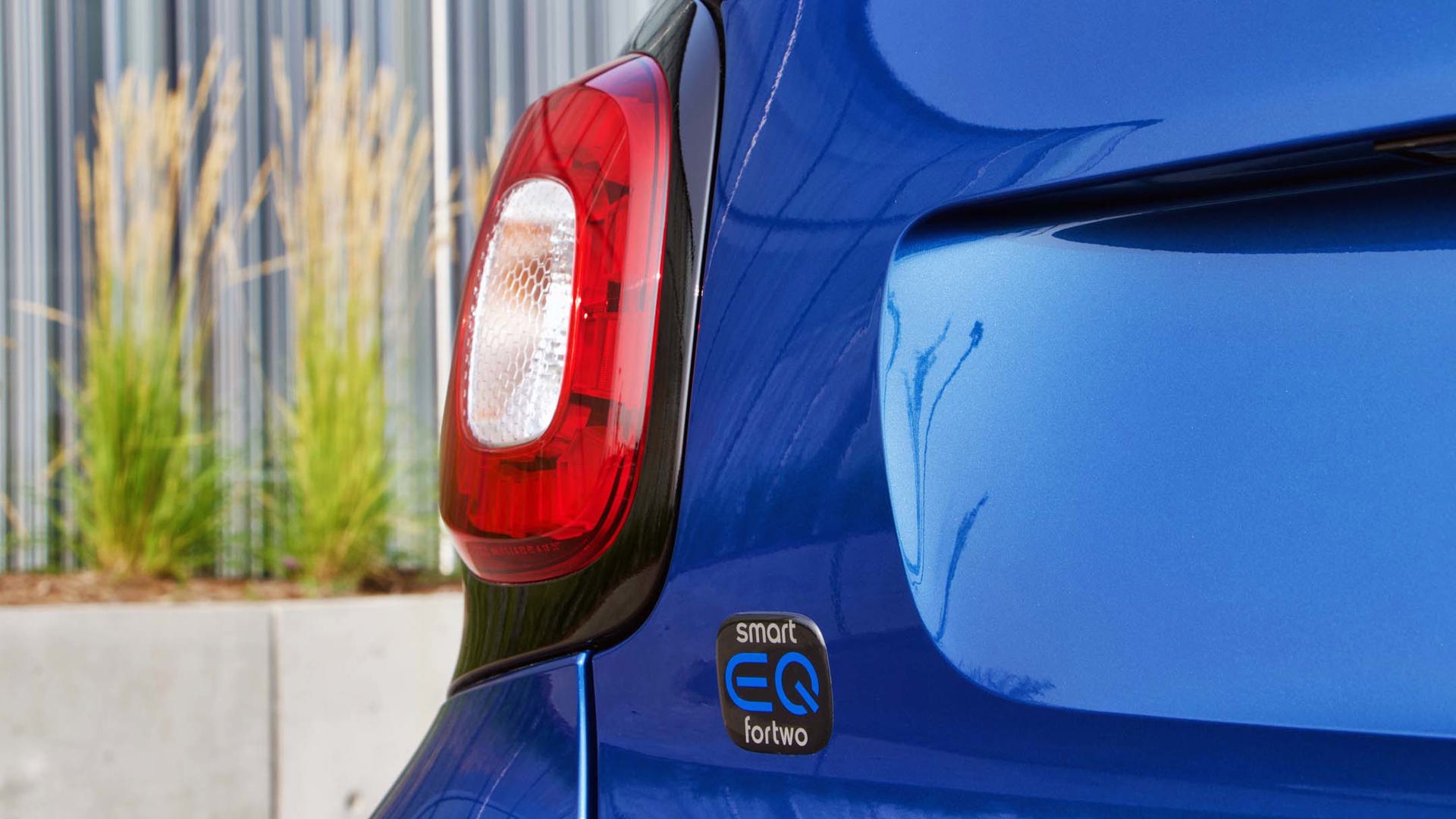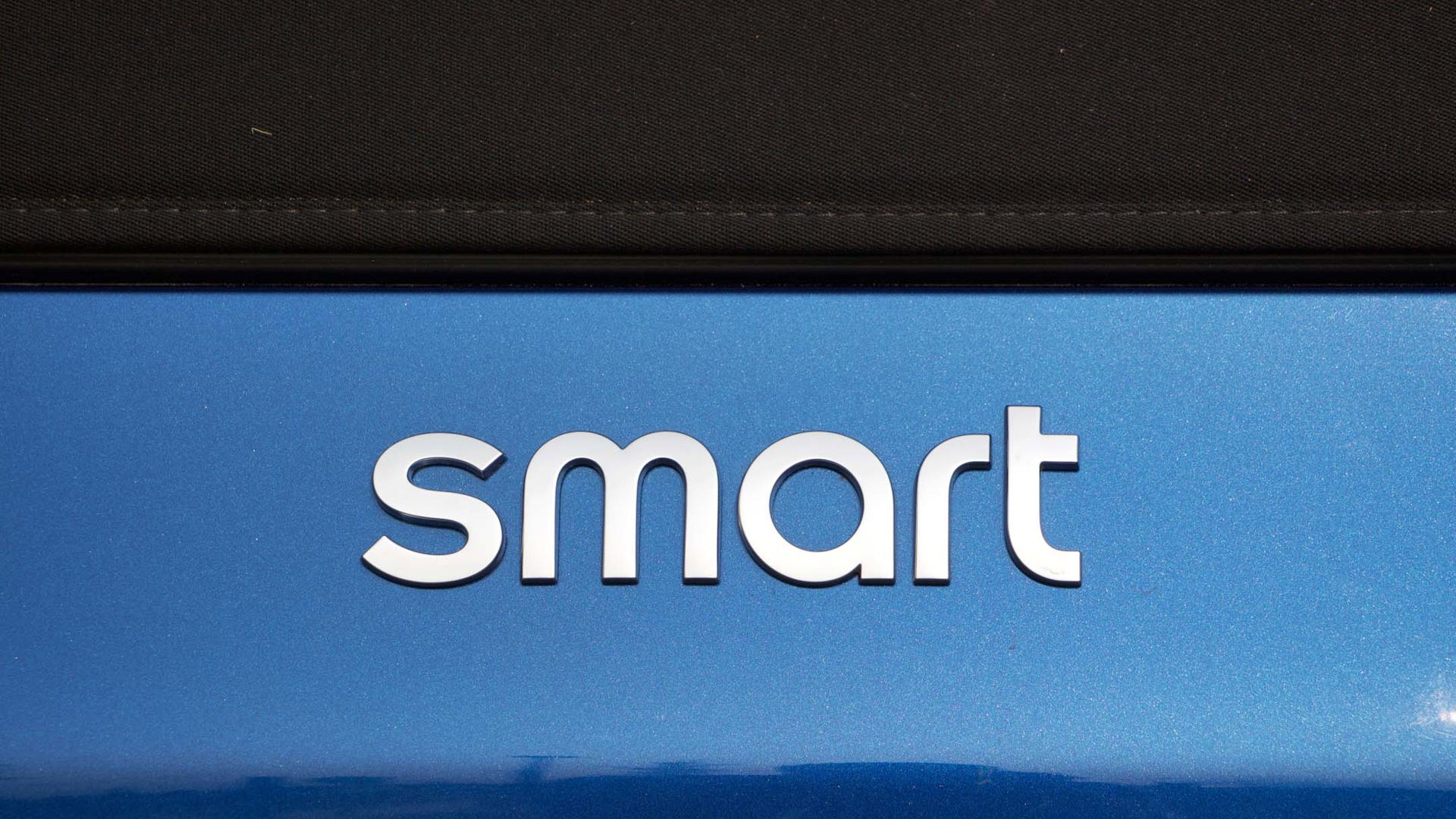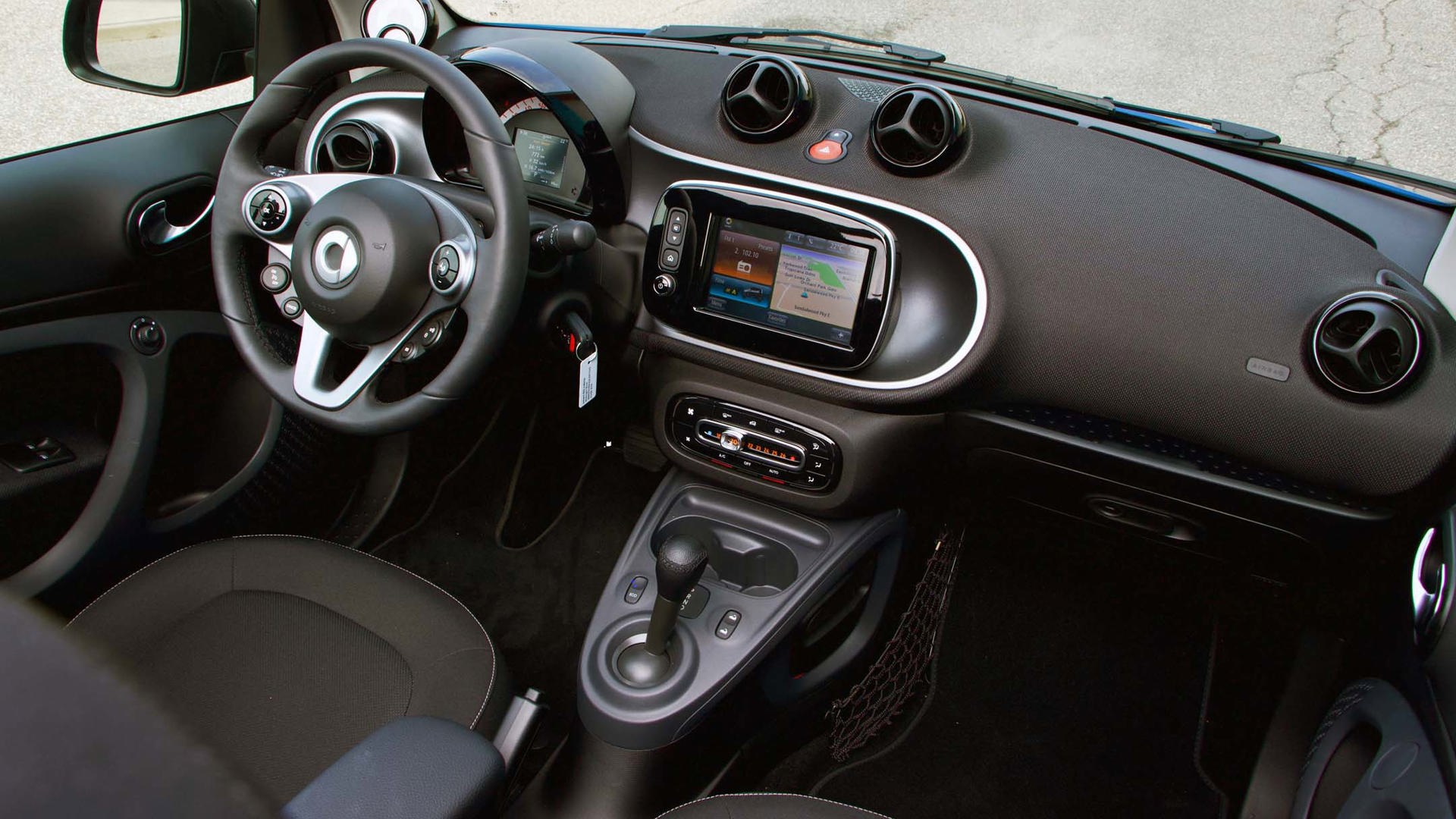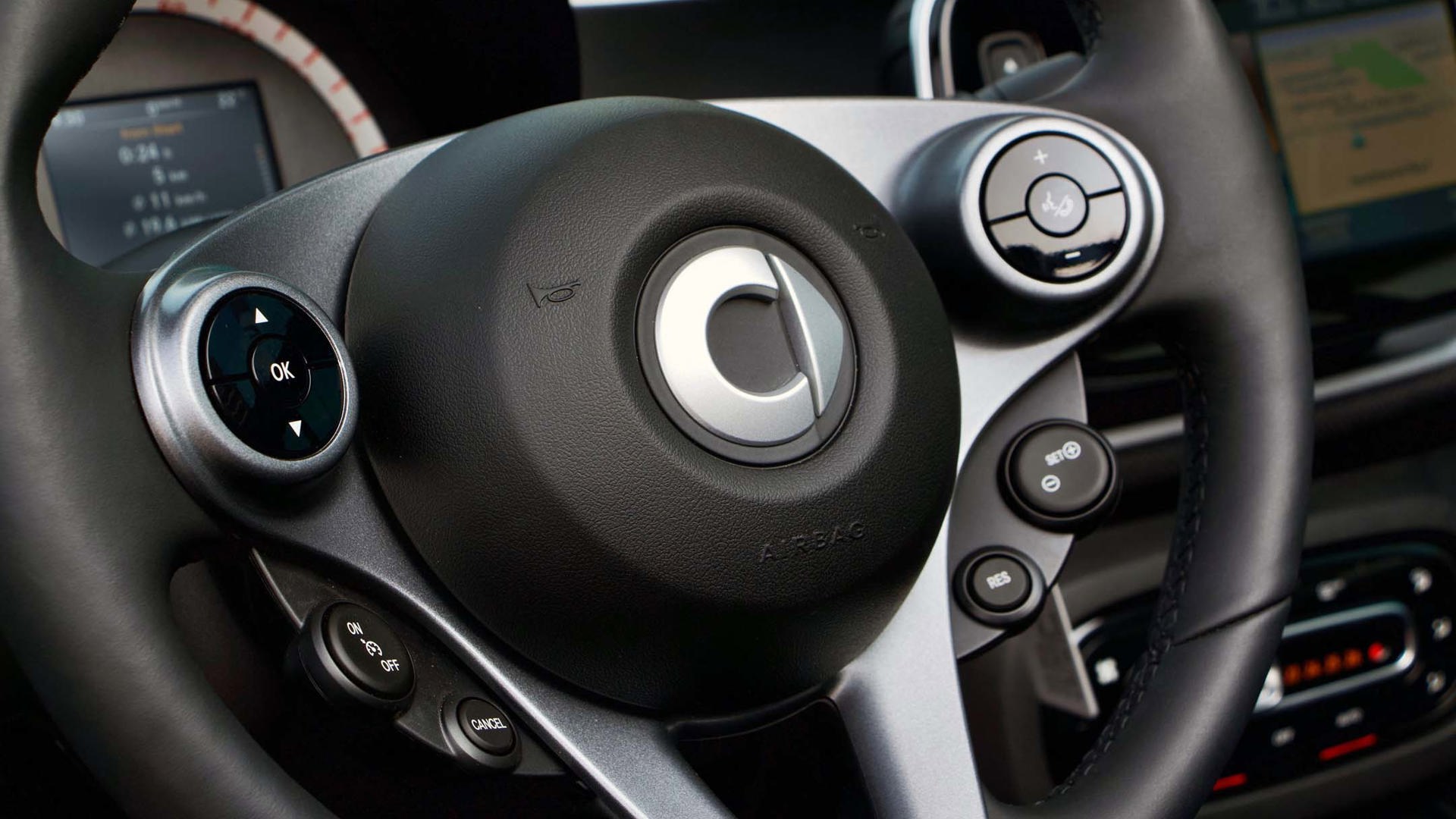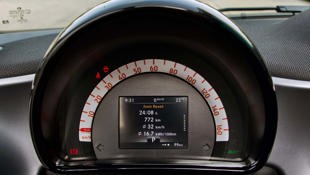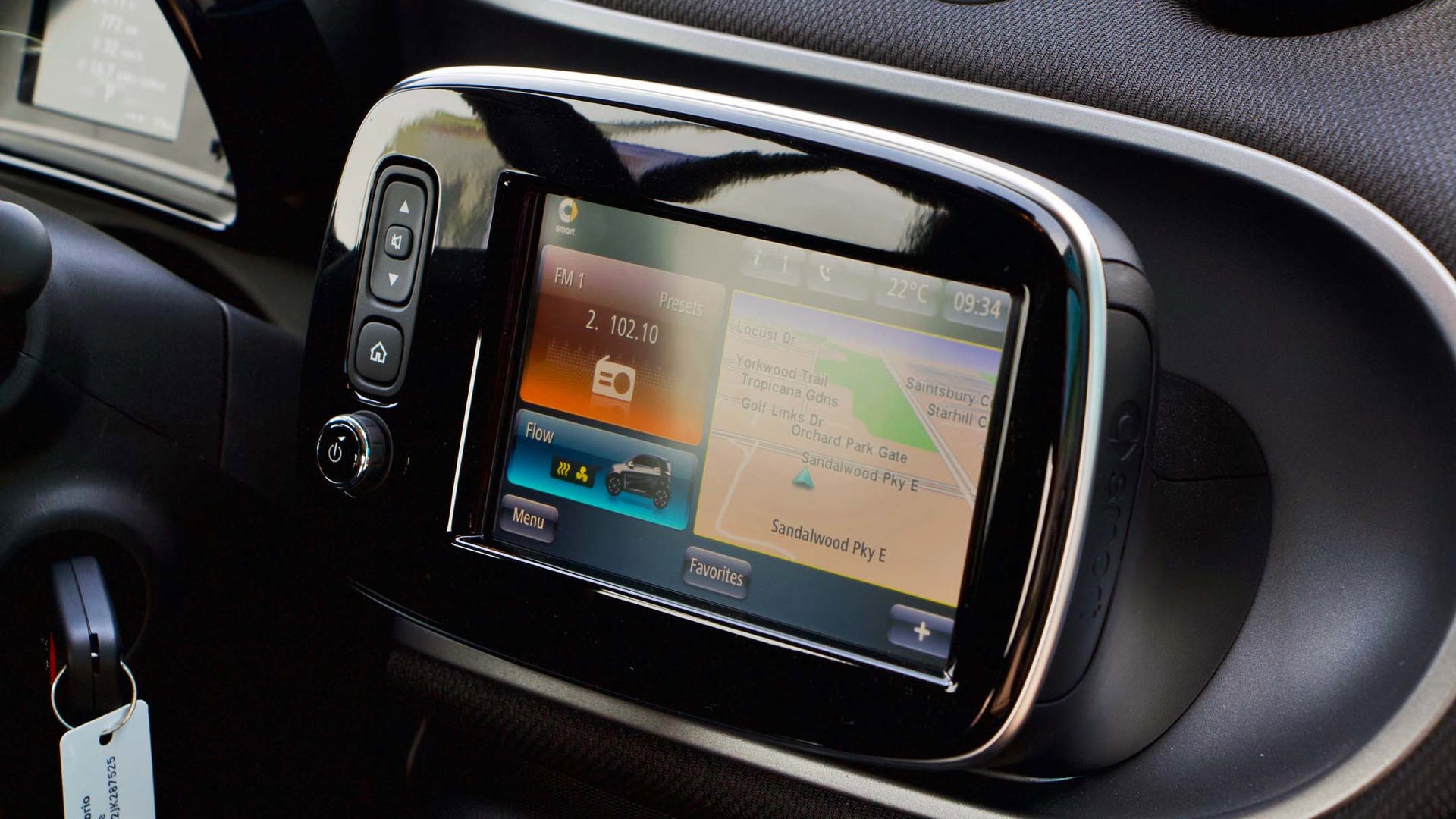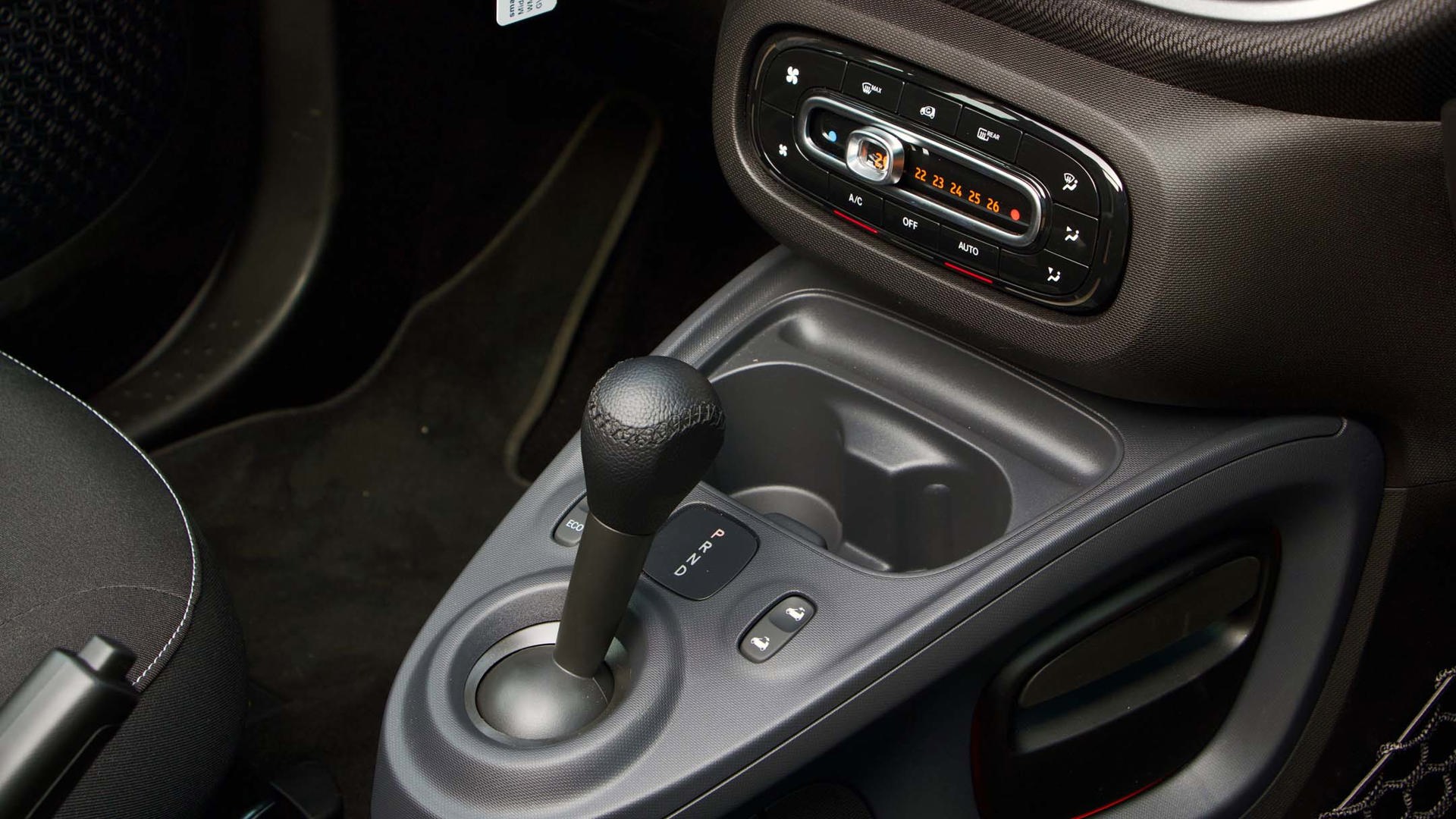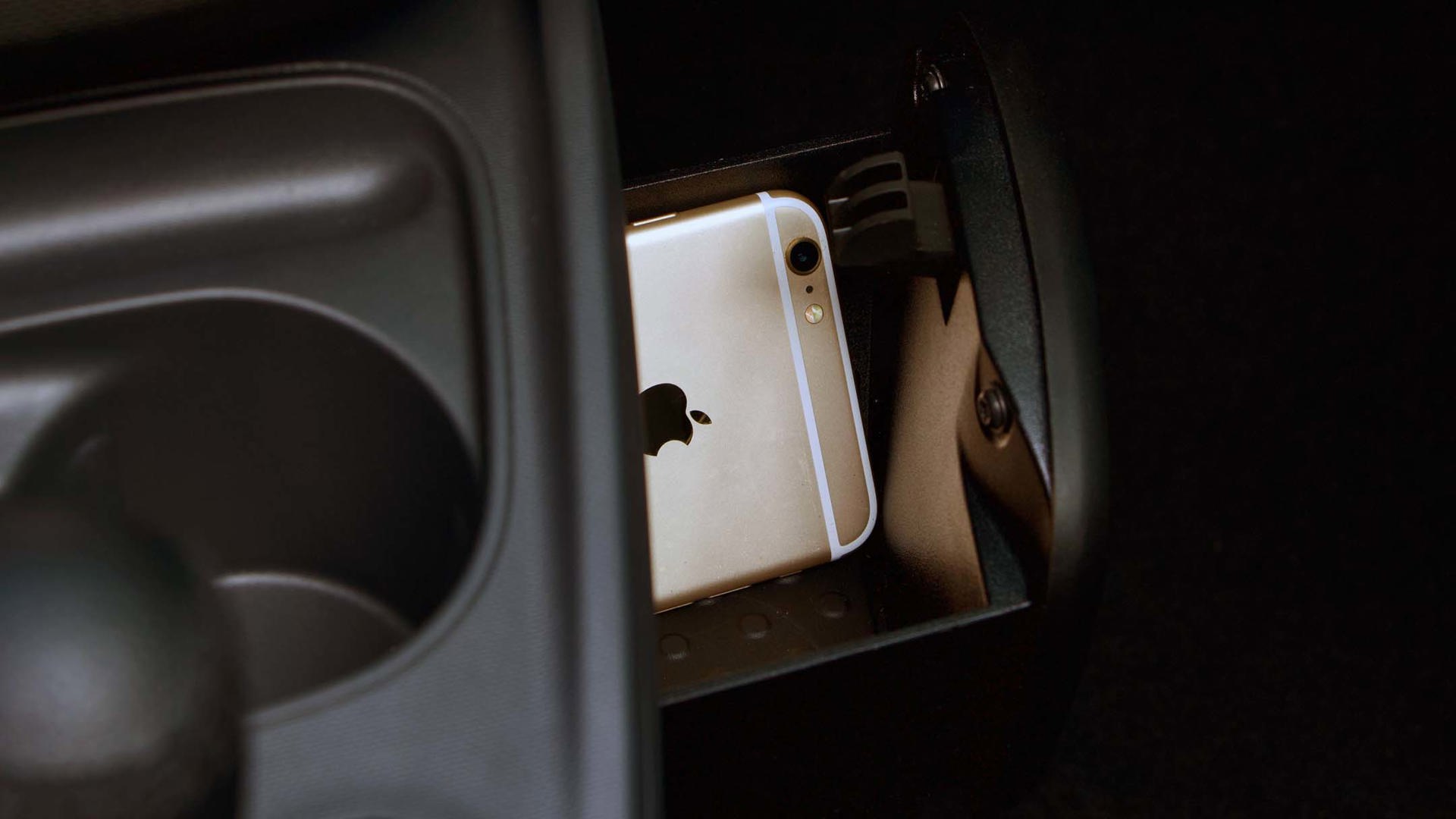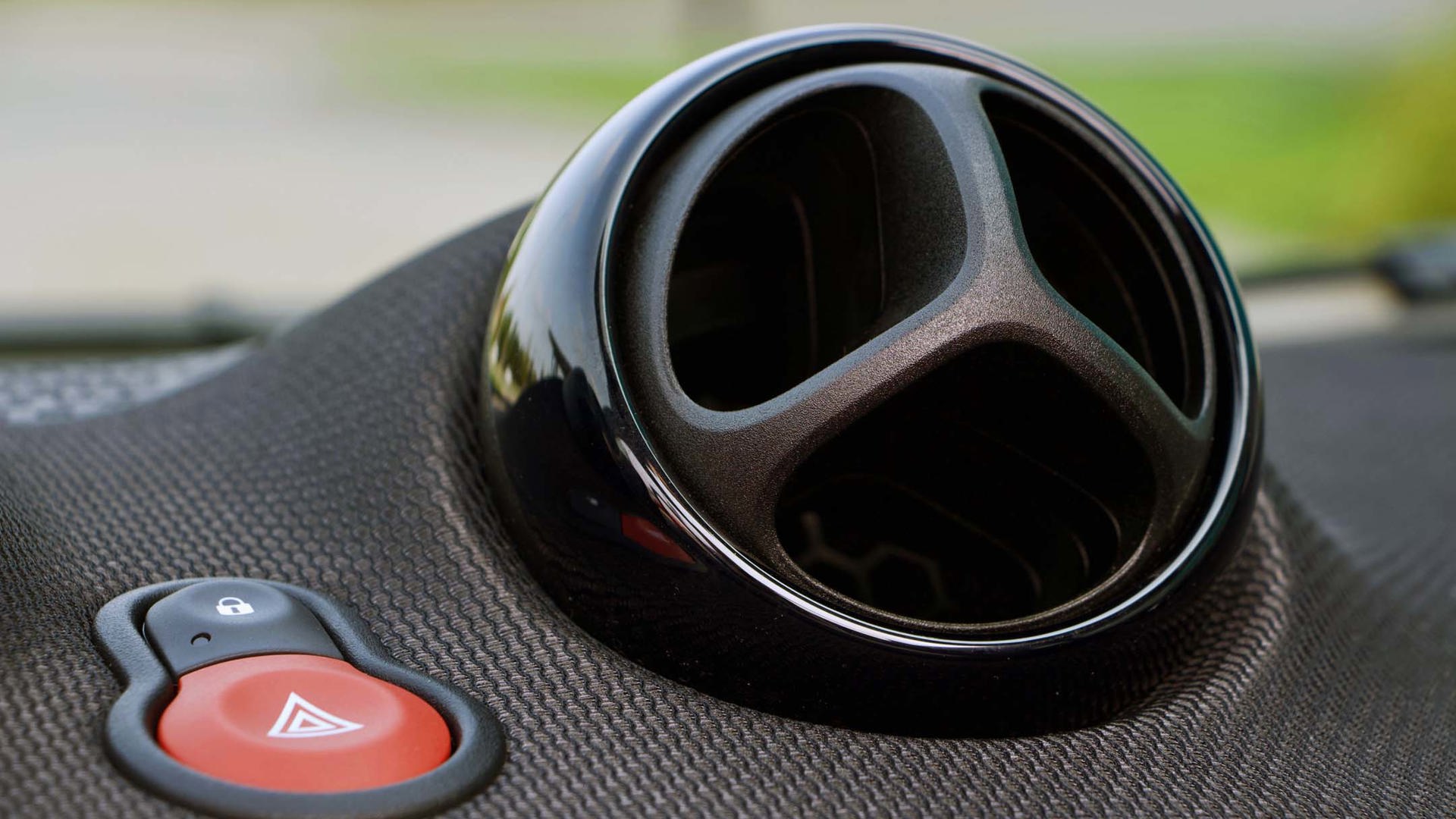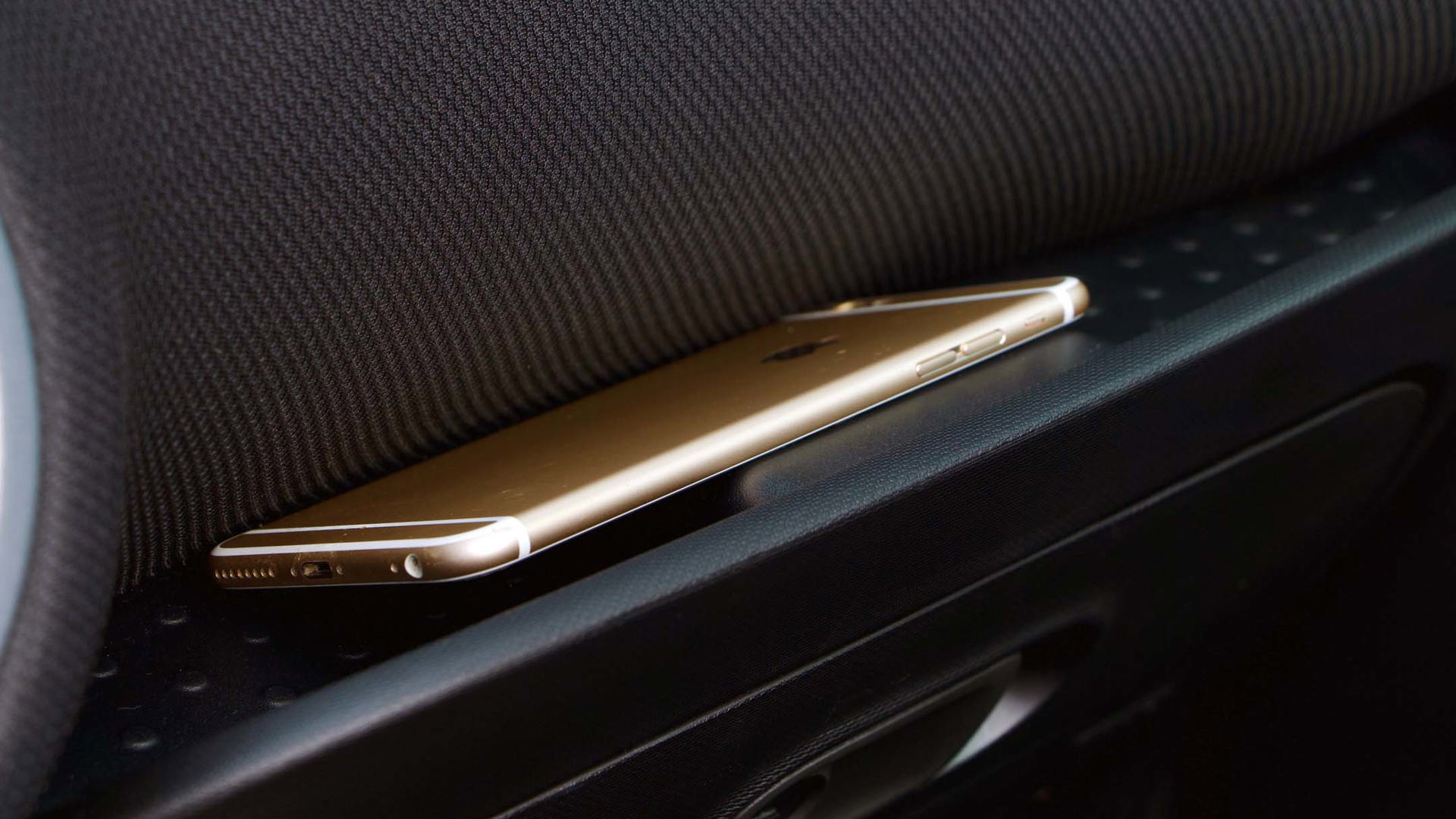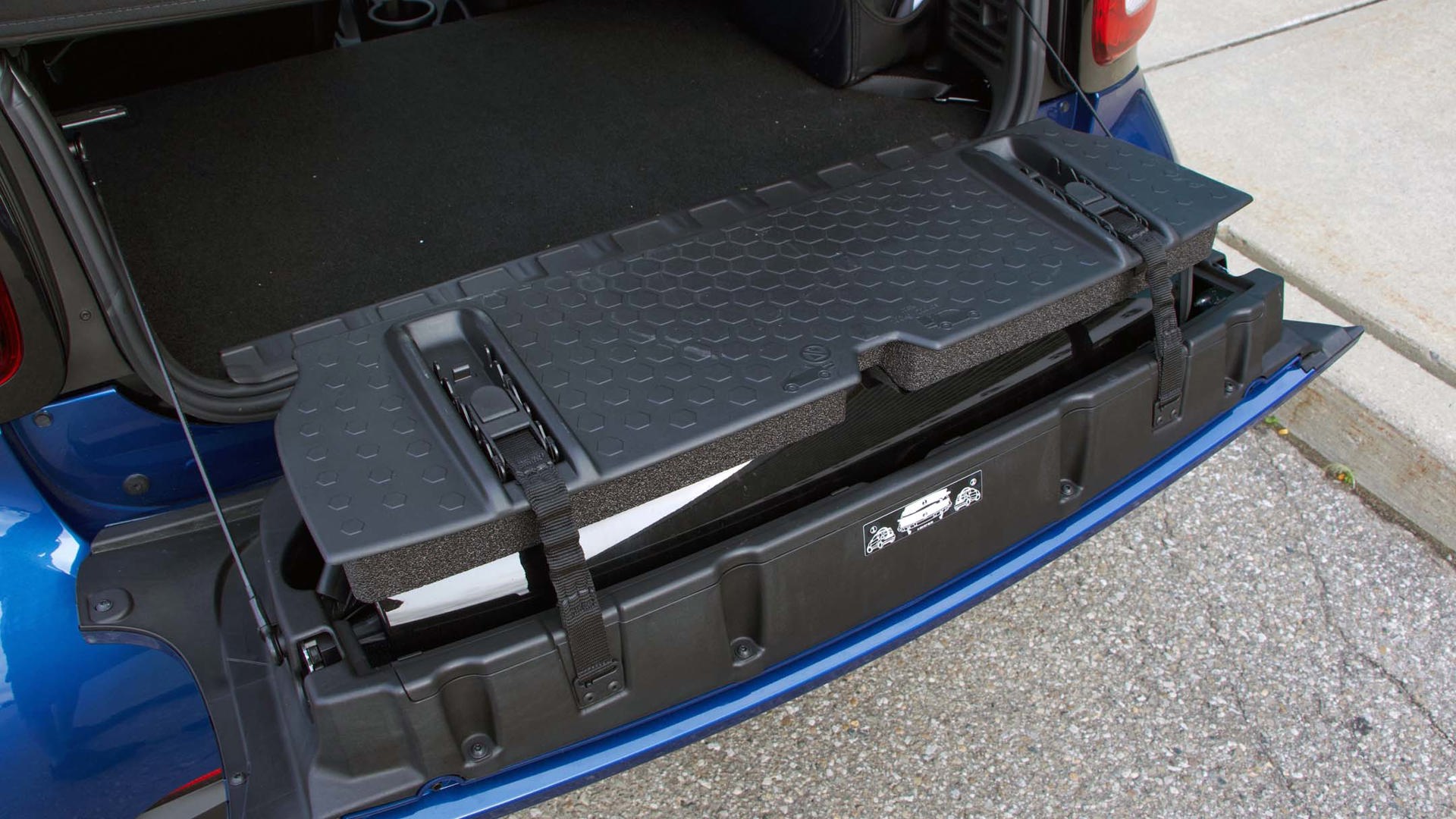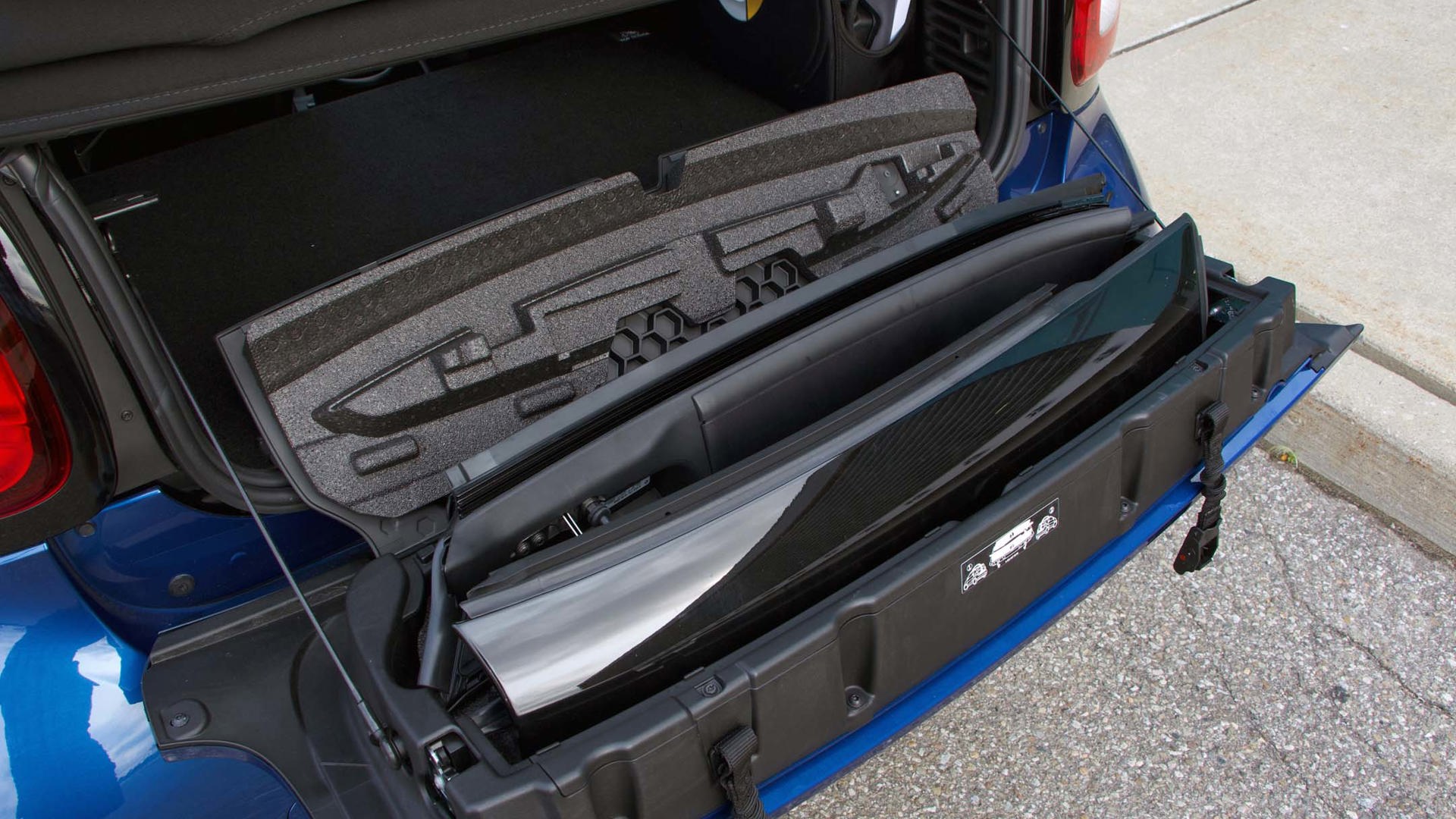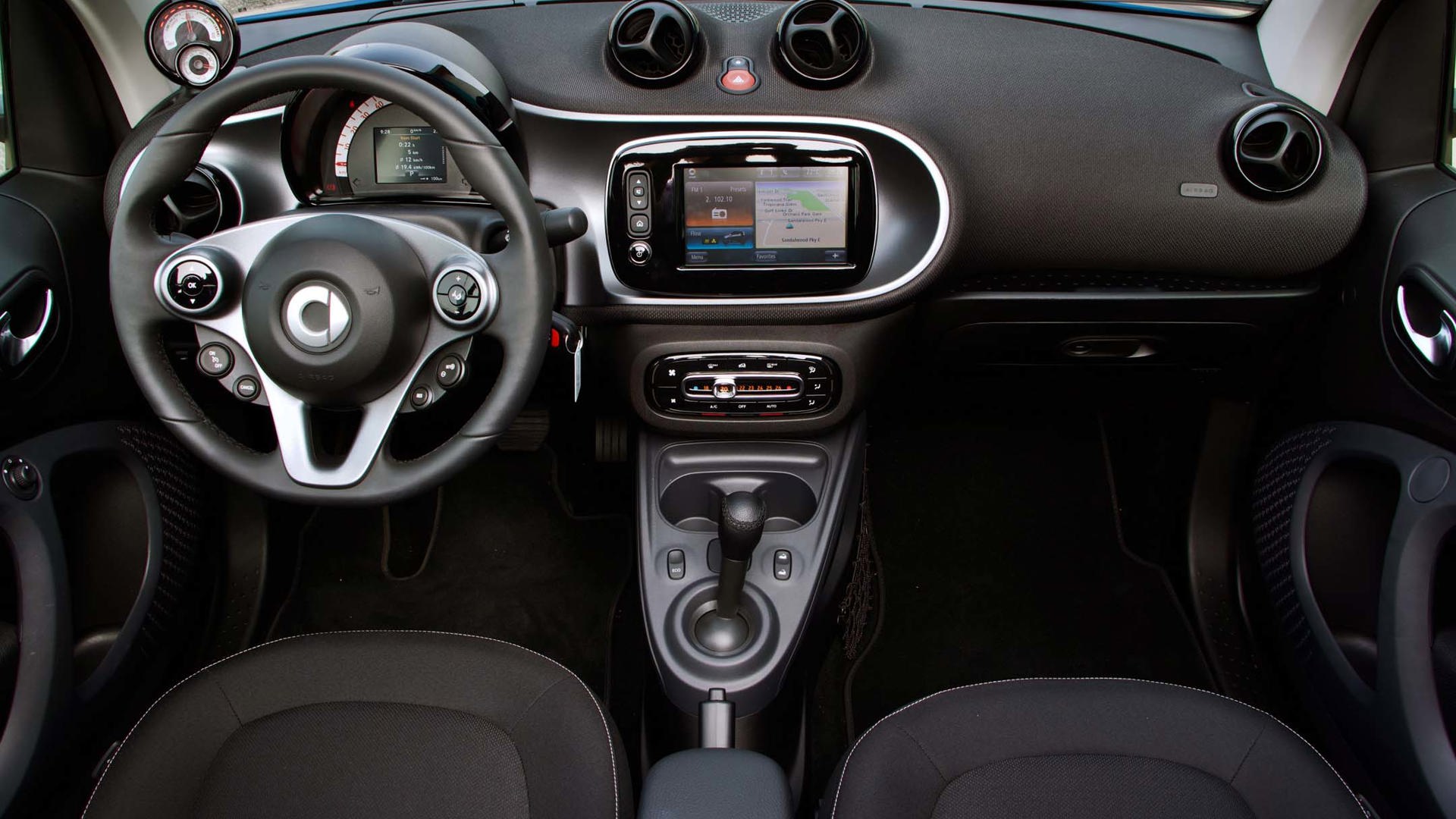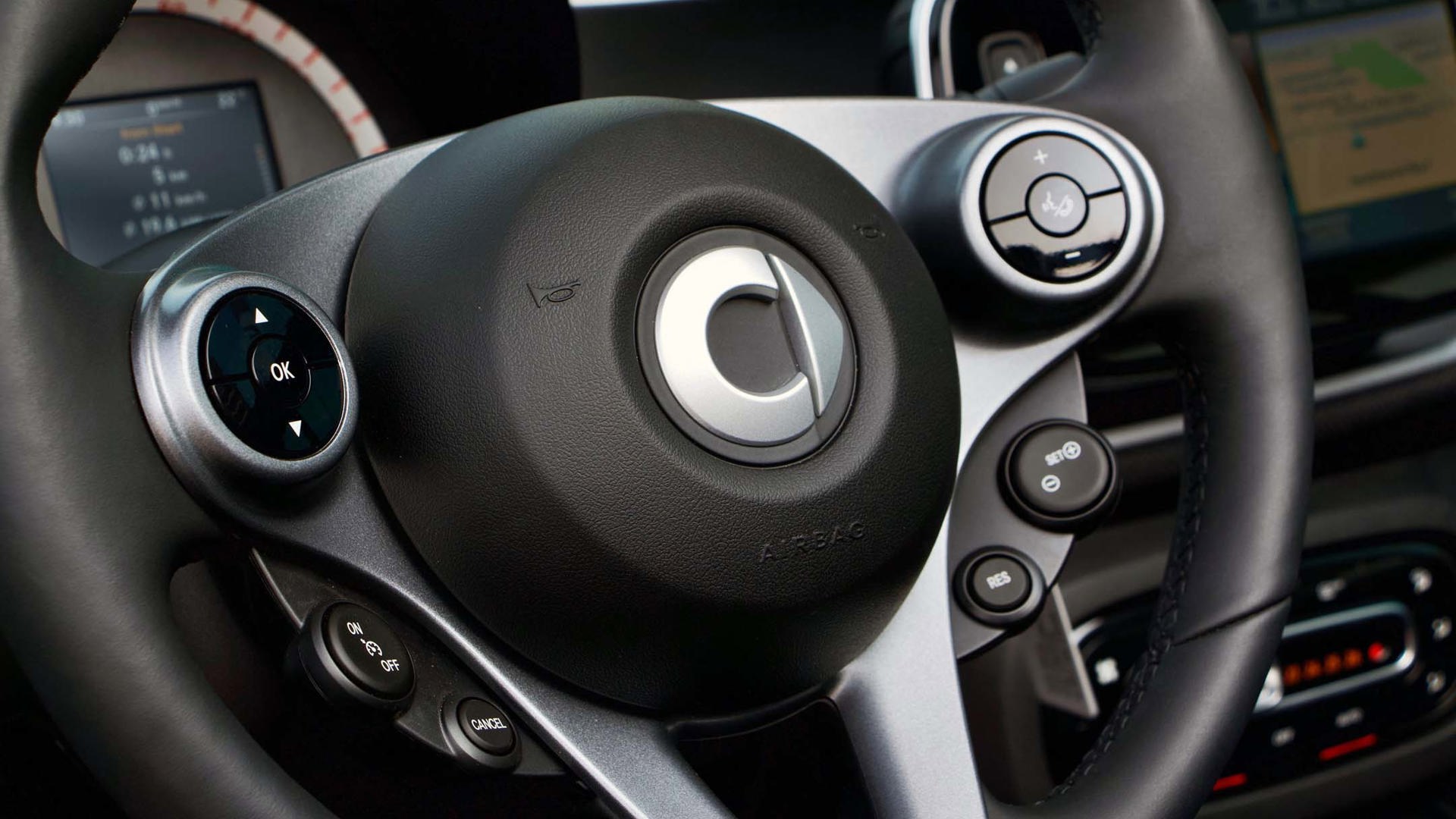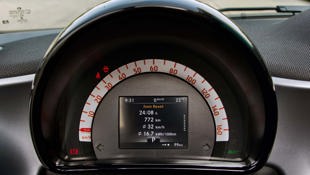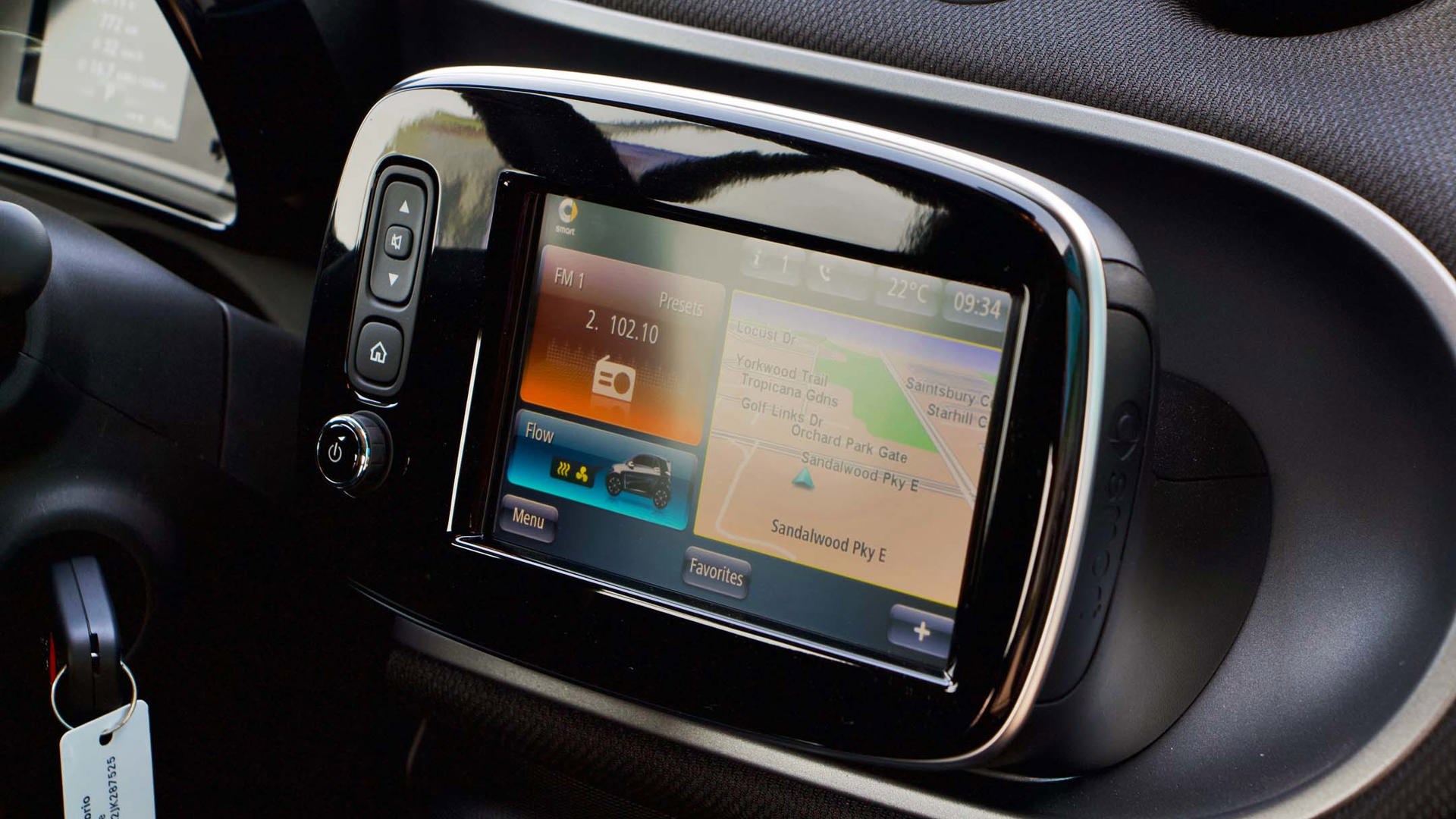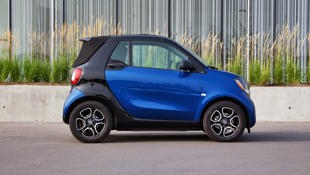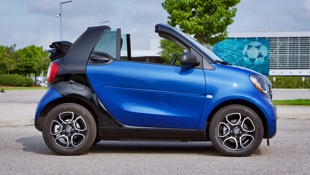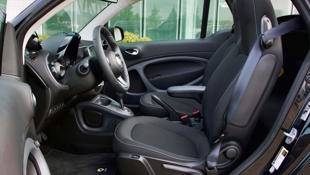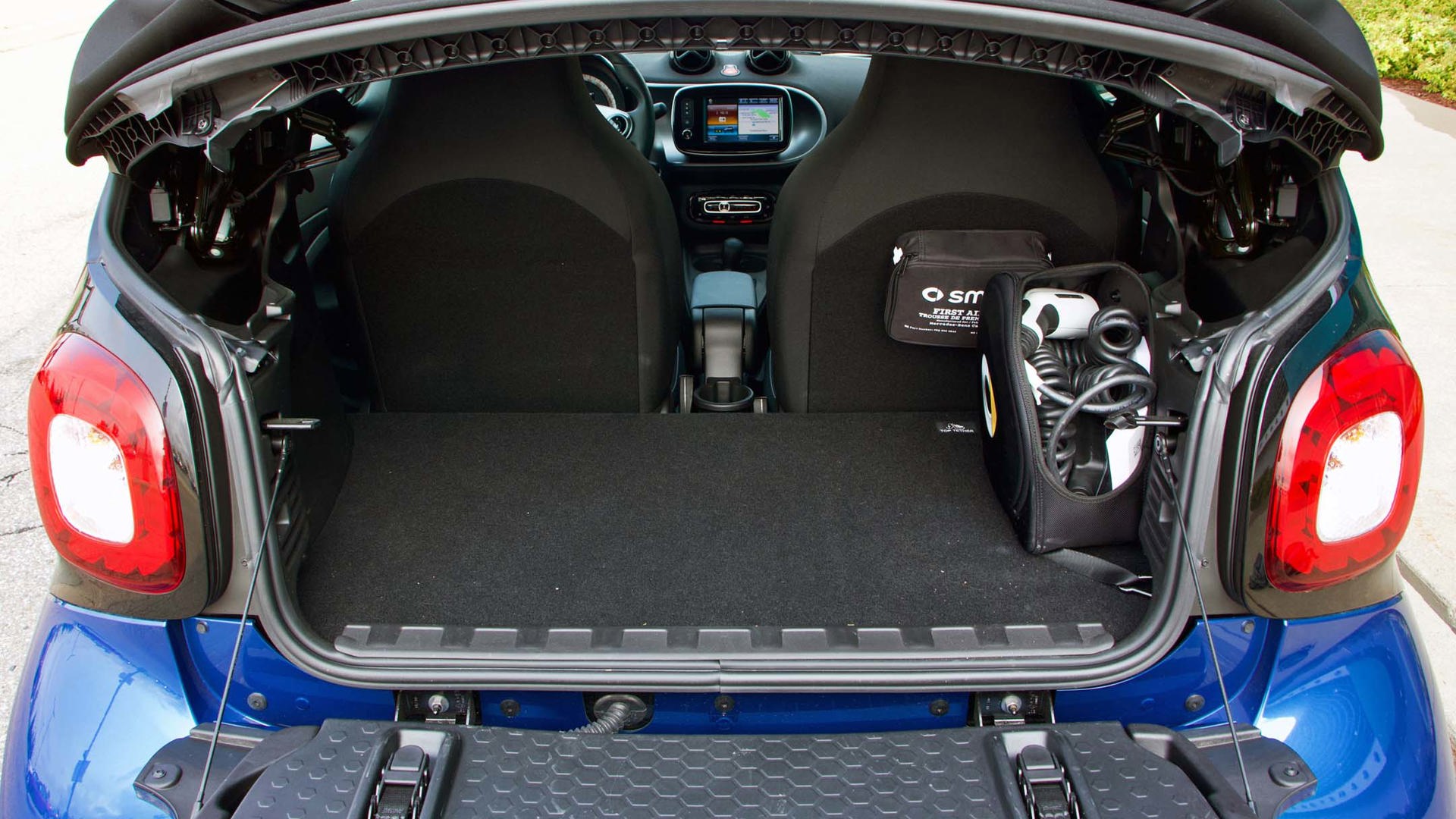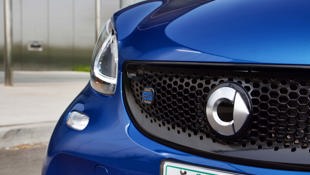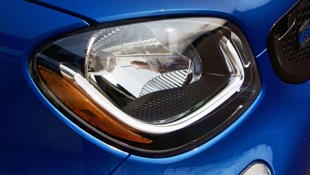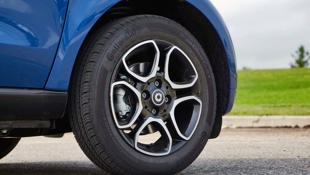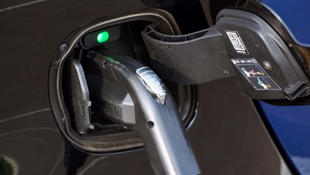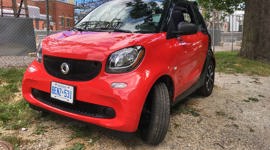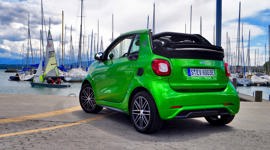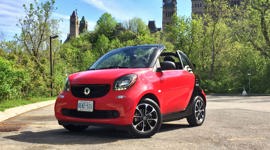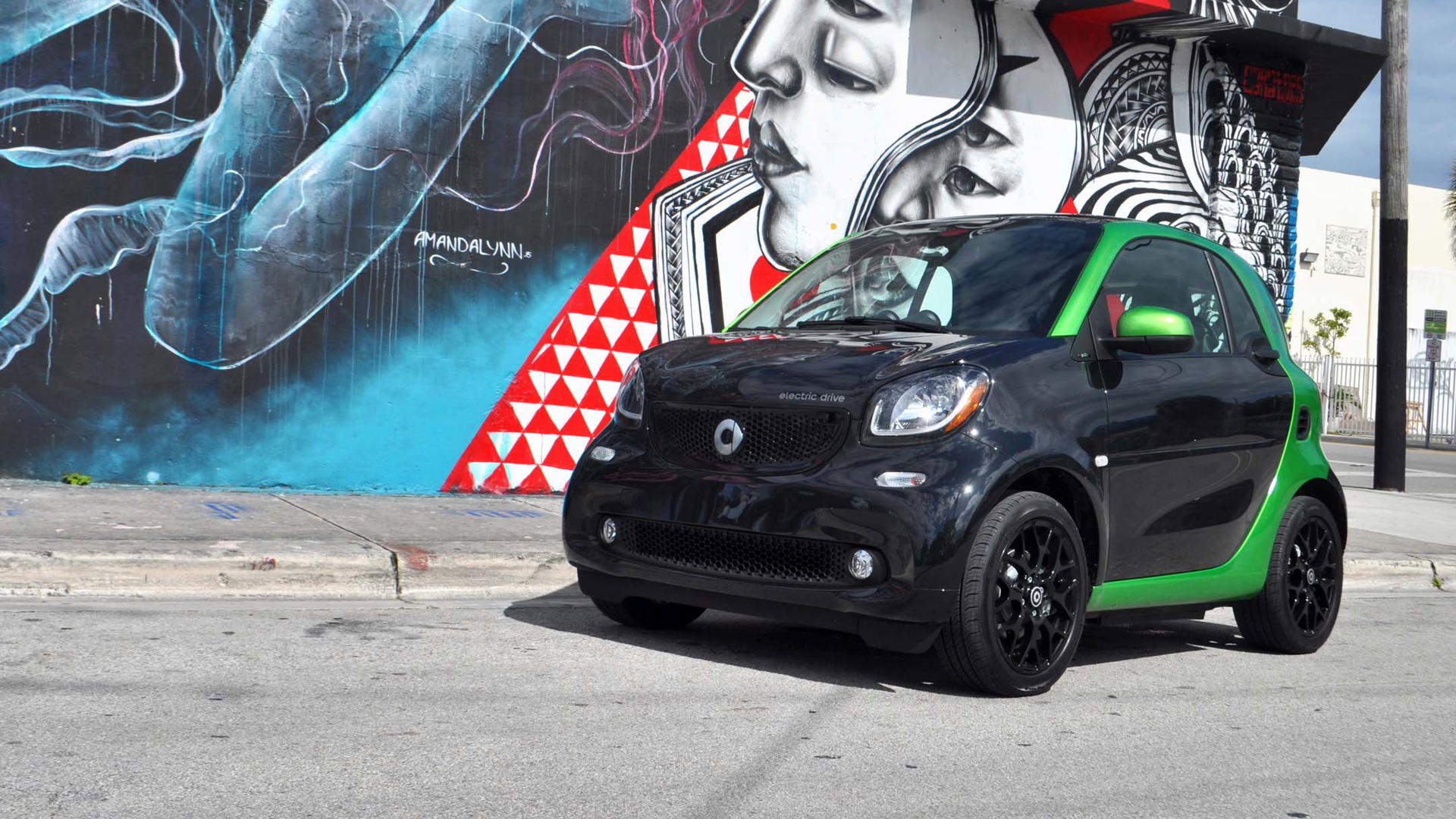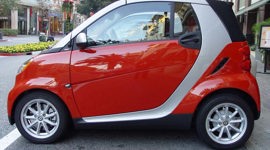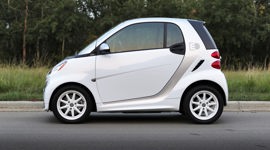 AutoTrader SCORE
AutoTrader SCORE
-
STYLING8/10
-
Safety9/10
-
PRACTICALITY5/10
-
USER-FRIENDLINESS7/10
-
FEATURES6/10
-
POWER9/10
-
COMFORT6/10
-
DRIVING FEEL10/10
-
FUEL ECONOMY6/10
-
VALUE4/10
Perhaps I got a little infatuated with the Smart EQ Fortwo Cabrio in just one short week, but as I drove it around on miscellaneous errands, I kept returning to the idea that this might be the perfect second vehicle for many families.
It’s tiny! Which makes it adorable! Yes, it deserves italics!
Now, every family needs a family vehicle to drag the kids to piano lessons, soccer practices, and on big family vacation road trips, and for many, that is all they need or can afford. That is why crossovers and crew-cab pickups have become the latest vehicles of choice and Dodge continues to sell over 40,000 Grand Caravans every year despite its paleolithic platform. But many families often want a second car for one spouse to commute or do a grocery run or go out for a night with the girls or a game of shinny. Unless you’re a goalie with equipment that takes up half a city block, the Smart Fortwo can serve pretty much any common need for quick occasional transportation.
Now, if you are unencumbered by family and are thinking of the Smart Fortwo as your only car, well, good luck with that. You might as well skip the ownership trap and go directly to car sharing, or give up road trips or taking more than one friend at a time. In our household, the Smart was that ideal second car, and we loved it for what it does offer, not its obvious shortcomings.
Much tiny! So adorableness! Wow!
Well, actually, one of the reasons we loved it so much was its greatest shortcoming – its size. It’s tiny! Which makes it adorable! Yes, it deserves italics! Just be grateful I’m not resorting to emojis. Although small cars can turn out awkward because of their unusual upright proportions, the Smart Fortwo isn’t hard on the eyes with its 15-inch wheels at the corners, bulging fenders, vivid colours for a fun little runabout, and its modernity on full display in that contrasting-colour safety-cell structure. If you can’t appreciate this thing’s cuteness, well, then, perhaps you’ve lost every last ounce of your Peter Pan complex and are fully grown up. We mourn for your inner child.
Working hand-in-hand with its size is one of the smallest turning circles you’ll find and you’ll be tempted to make U-turns in the oddest of places, just because you can. Hilariously, it has a back-up camera nested in the rear-view mirror even though you could probably reach behind you and feel with your hand as you back up close to something. [Note: Our legal team has advised us that we do not recommend you actually try this.]
Now, although being tiny is adorable and endearing, larger drivers might feel cramped in the two-seat cabin, but taller drivers can opt for the convertible version and just stick their head out the top! [Note: Our legal team has advised us that you should definitely not try this.] Personally, at 5'10" and carrying more weight than my doctor advises, I found the space reasonable size-wise, but awkward. Our tester did not feature the optional height adjustable steering wheel, but both I and my five-foot-tall wife could find a workable driving position from the manually adjustable seats. However, the dead pedal was awkwardly positioned and putting my foot on the floor always ended up causing my knee to bump into the mirror adjustment knob – I’d worry that the added weight and pressure from my leg would eventually break it prematurely, and it’s generally a seating position I wouldn’t want to have to be stuck in for very long.
Like the passenger space, the cargo space is laughable compared to normal cars, but realistically it could still handle a hockey bag (the stick would have to go in the passenger seat), a week’s worth of groceries, or a few cases of beer.
Smaller cargo has plenty of cubbies to hide in, with cupholders and a small tray in the console bottle holder and longer pockets in the door, a cargo net in the passenger footwell, a glovebox, as well as a small hidden tray that slides out of the console.
The last storage space of note is the one for the removable roof rails that support the convertible roof. The roof can actually open all the way down to the trunk lid whether you remove them or not, but taking them off provides a more complete convertible feeling if you’re really hardcore about it. The roof is powered, so it’s a simple press of a button to slide it back, and a second press to lower it down to the trunk gate. To remove the roof rails, you press a little button at the back and it pops out, and the tailgate has perfectly shaped slots in which to insert them and a latching cover that snaps tight. Don’t get any funny ideas about tailgating though, as that tailgate has a 100 kg (220 lb) weight limit.
More than a golf cart
Since you have to drive between the parking spaces that the Smart was designed for, let me tell you a little bit about its driving manners. First of all, it weighs next to nothing for a modern car, barely breaking 1,000 kilos, so it requires little more than a lazy mule to get it moving, but Mercedes didn’t shortchange the Smart in the power department. The EQ Fortwo has a 60 kW electric motor under the trunk with energy supplied by a 17.6 kWh lithium-ion battery positioned under the passenger compartment floor. The motor generates up to 80 hp and 118 lb-ft, and although its 0–100 km/h acceleration is over 11 seconds, it gets through an intersection in the blink of an eye, and it’s only if you try to sustain that acceleration that it starts to flag. Even at intermediate speeds, a firm prod of the throttle calls up all that torque and gets you a good jump.
What’s most surprising about the Smart EQ Fortwo is its highway manners. You’ll never confuse it for a smooth-sailing big Benz, but considering its size it does a good job staying centred, and the suspension is well sorted enough to handle typical bumps and potholes without getting tossed around. Larger bumps or wider, rolling humps in the pavement can buck it around quite a bit, but overall the Smart delivers an impressive level of comfort for such a tiny car, and a convertible no less. Because of its super-strong safety cell and small, stiff structure, there was no cowl shake whatsoever and wind intrusion was not disruptive, even with the roof fully stowed and windows down.
While it can get up to 130 km/h and cruise there, you can feel the motor straining to sustain that and practically see the battery gauge dropping. It’s much more comfortable and efficient at 110 even if that relegates you to the slowpoke lane on most highways around the country. Of course, where it performs best is in dense traffic or light-to-light city driving, where its smooth power delivery and quick spurts of acceleration are most effective, and the frequent decelerating and braking helps regenerate energy to feed back to the battery to eke out bonus kilometres.
Charging is handled by a 7.2 kWh onboard charger that can top up the battery in 2.5 to 3 hours from a 240V Stage 2 outlet, or 13 hours on a normal 110V household outlet. While range is officially listed at 93 km by Natural Resources Canada, the onboard range estimator is more optimistic at over 120 km on some days (other days it was less optimistic at 116). That doesn’t seem the least bit farfetched as I managed a round trip of 93 km on one adventurous day, and still had 20 km to spare when reaching home. However, doing even a simple road trip like Toronto to Montreal or Ottawa would mean at least three stops, each taking at least a half hour to charge if you can even find a high-speed DC charger. You’d have to very committed to efficiency to be that patient.
In its natural habitat around the city, energy consumption is rated at 18.7 kWh/100 km, but that goes up to 23.1 on the highway, and averages out to 20.7 combined. Our average showing on the onboard computer was 16.7 kWh/100 km over its past 825 km, which included both my week and some previous kilometres (I wanted to see as large a sample size as possible, so I did not reset it at the beginning of my week). I actually brought that down from over 18 kWh/100 km despite much testing of its acceleration capabilities and driving at higher-than-typical speeds, again, purely for the sake of testing…. A driver aiming for efficiency might very well be able to bring that down to 15 or perhaps even lower, which I saw on some trips.
Natural Resources Canada translates that into more familiar terms as Le/100 km, the cost equivalent of electricity compared to gasoline, and here the Smart EQ Fortwo is rated at a combine 2.3 Le/100 km. NRCan also estimates an annual energy cost of $538, though with wildly varying hydro rates across the country you’re better off calculating it for yourselves, as it would be closer to $720 in Toronto vs as little as $320 in Montreal if you went by the ballpark 20,000 km per year at a rounded 20 kWh/100 km. Factor in free public charging at more and more locations and smart EQ Fortwo drivers can spend next to nothing on energy, and a lot less than most cars on maintenance as there is no oil to change, no transmission fluid to worry about, and brakes are much preserved by the regenerative braking that does not use the conventional braking system. But it’s not just in energy consumption that electric cars offer benefits, as EVs offer emissions-free driving, and in BC, Ontario, and Quebec power generation is completely coal-free.
Let’s talk price
Aside from its very limited range, the Smart EQ Fortwo’s other major downside is price. The 2018 Smart EQ Fortwo (you will still see it on the Smart website as the “electric drive” or ED model – I guess Smart had problems getting it up… to date) starts at $29,050 in Coupe form or $32,050 for the Cabriolet, which is the version we tested, with various packages added to the mix pushing the price up over $35K just to reach basic levels of equipment that you would take for granted on a Hyundai Accent costing half as much. A centre armrest that wasn’t even cushioned costs an extra $125 and a touchscreen for $1,395. At least that touchscreen was seven inches across and included navigation and other additional features as part of the price, so it is decent value if you can dig the slightly retro bubbly look of the icons and graphics. One neat feature is that when you hit 20 km of range remaining, an alert pops up and it suggests several charging stations – not unique to the Smart, but definitely a benefit over models without the navigation.
Anyhow, as much as I understand the electric vehicles have a price premium over equivalent gas-powered vehicles, it would be incredibly hard to fork over that much money for something offering so little utility beyond mere short runs and transportation for just one or two. Never mind a subcompact with more than twice as many seats for half the price, you can get a well-equipped compact crossover like the Hyundai Tucson or Honda CR-V for that price. The again, comparing apples to apples, the EQ Smart Fortwo is the most affordable EV in Canada, but it’s not a huge step up to the $35,649 Hyundai Ioniq Electric, $35,895 Kia Soul EV, $35,998 Nissan Leaf, or $36,355 Volkswagen e-Golf. The Chevrolet Bolt and Tesla Model 3 may offer more range, but they are another tier up in pricing.
EV shoppers in Ontario no longer get to gloat about the massive rebates offered by the Ontario government since Premier Ford killed the incentive program. Oddly, that actually favours the EQ Smart Fortwo in this province compared to its EV competition as the rebates were $3,000 more for those three five-seaters, meaning they were all on pretty even footing for price. Rebates of up to $5,000 in BC and $8,000 in Quebec remain in effect, both of those representing the maximum rebates, so in those provinces it retains a price advantage over the electric competition, and isn’t so disadvantaged when it comes to value compared to gasoline-powered vehicles its size.
As I said early on in this review, I absolutely fell in love with the EQ Smart Fortwo during my week with it, and although I adored its zippy driving, cute looks, and ultimate efficiency, I just don’t think I could pass up the extra seats, practicality, and added range of competitors like the Leaf (242 km), Soul EV (179 km), Ioniq Electric (200 km), E-Golf (201 km) for just a few thousand dollars more. Then we could use our EV as a second family vehicle for all our short hops and even medium hops, meaning we would save more money and pollute less for more of our driving – if you’re spending that much on a car, you want to use it as much as possible, right?
The EQ Smart Fortwo is a brilliant little car, and even sunnier in Cabriolet form, so if you don’t need the usual practicality of four seats and don’t range very far in your errands and adventures, it will be a cheerful little companion for your travels.
| Engine Displacement | 60 kW |
|---|---|
| Engine Cylinders | N/A |
| Peak Horsepower | 80 hp |
| Peak Torque | 118 lb-ft |
| Fuel Economy | 2.1/2.6/2.3 Le/100 km; 18.7/23.1/20.7 kWh/100 km |
| Cargo Space | 220 / 340 L seat forward |
| Model Tested | 2018 Smart EQ Fortwo Cabriolet |
| Base Price | $32,050 |
| A/C Tax | $100 |
| Destination Fee | $2,075 |
| Price as Tested | $37,065 |
|
Optional Equipment
$2,840 – Touchscreen Package $1,395; LED Lighting Package $695; Midnight Blue Metallic $395; Ambient Lighting $230; Centre Armrest $125
|
|
